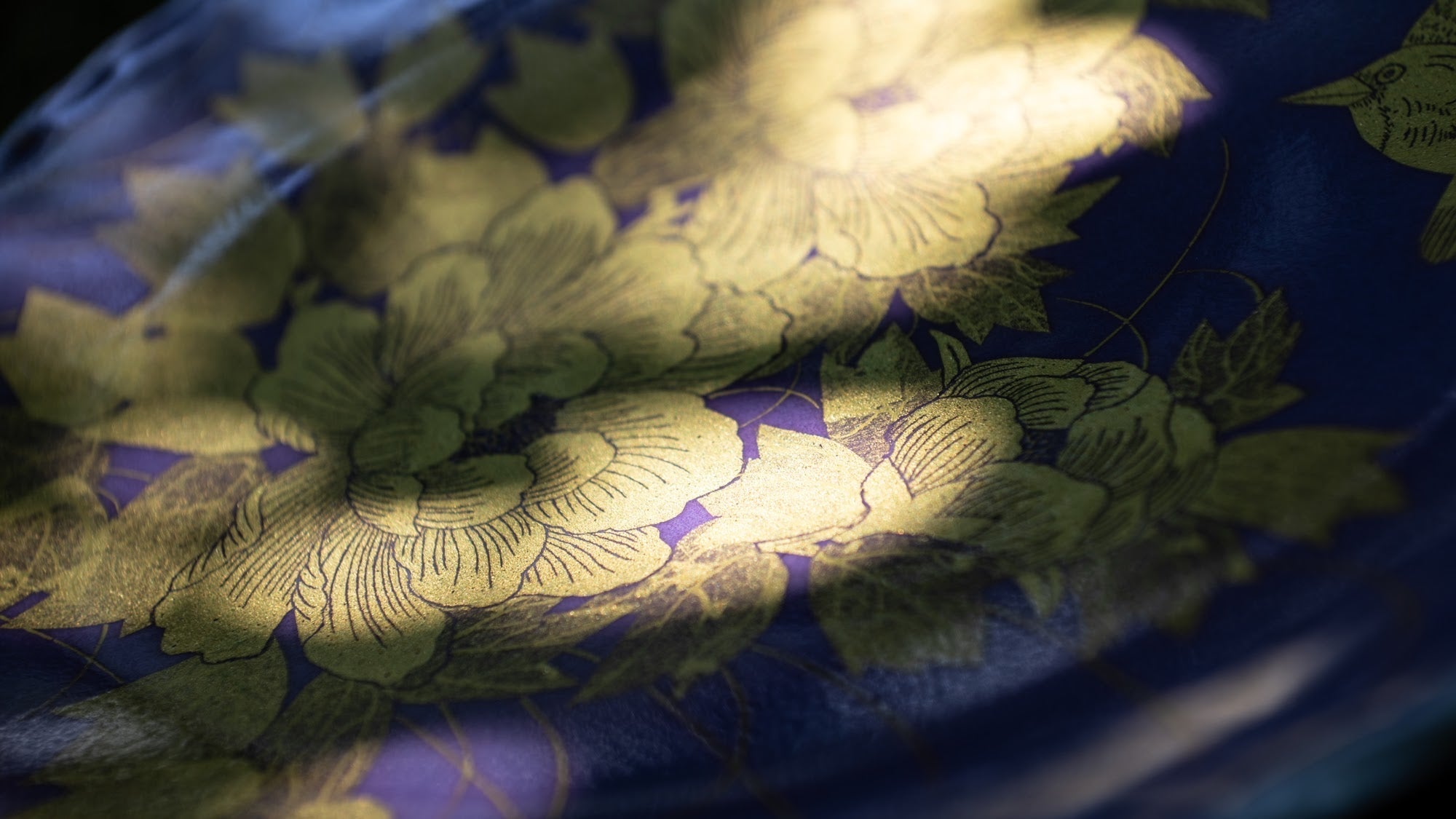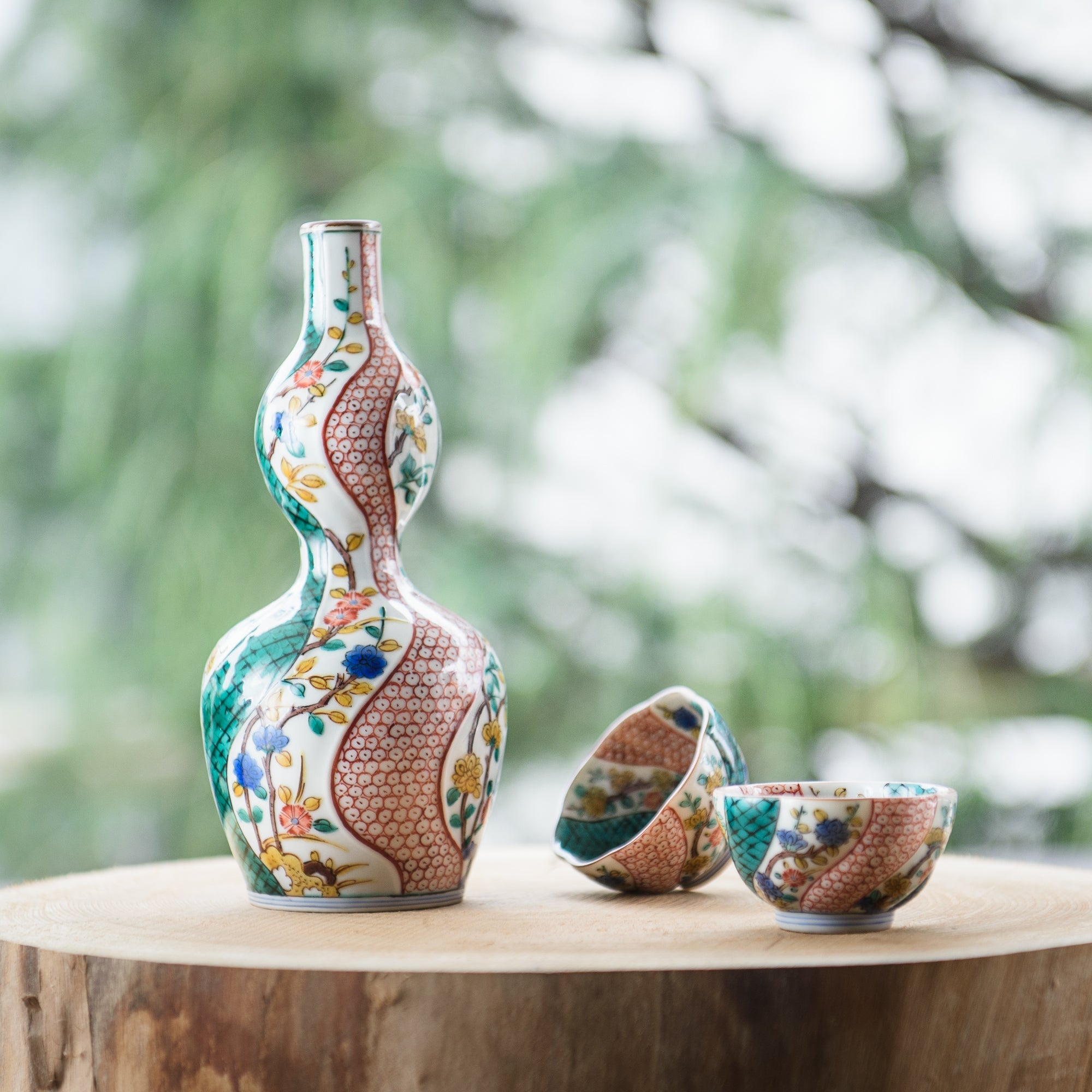
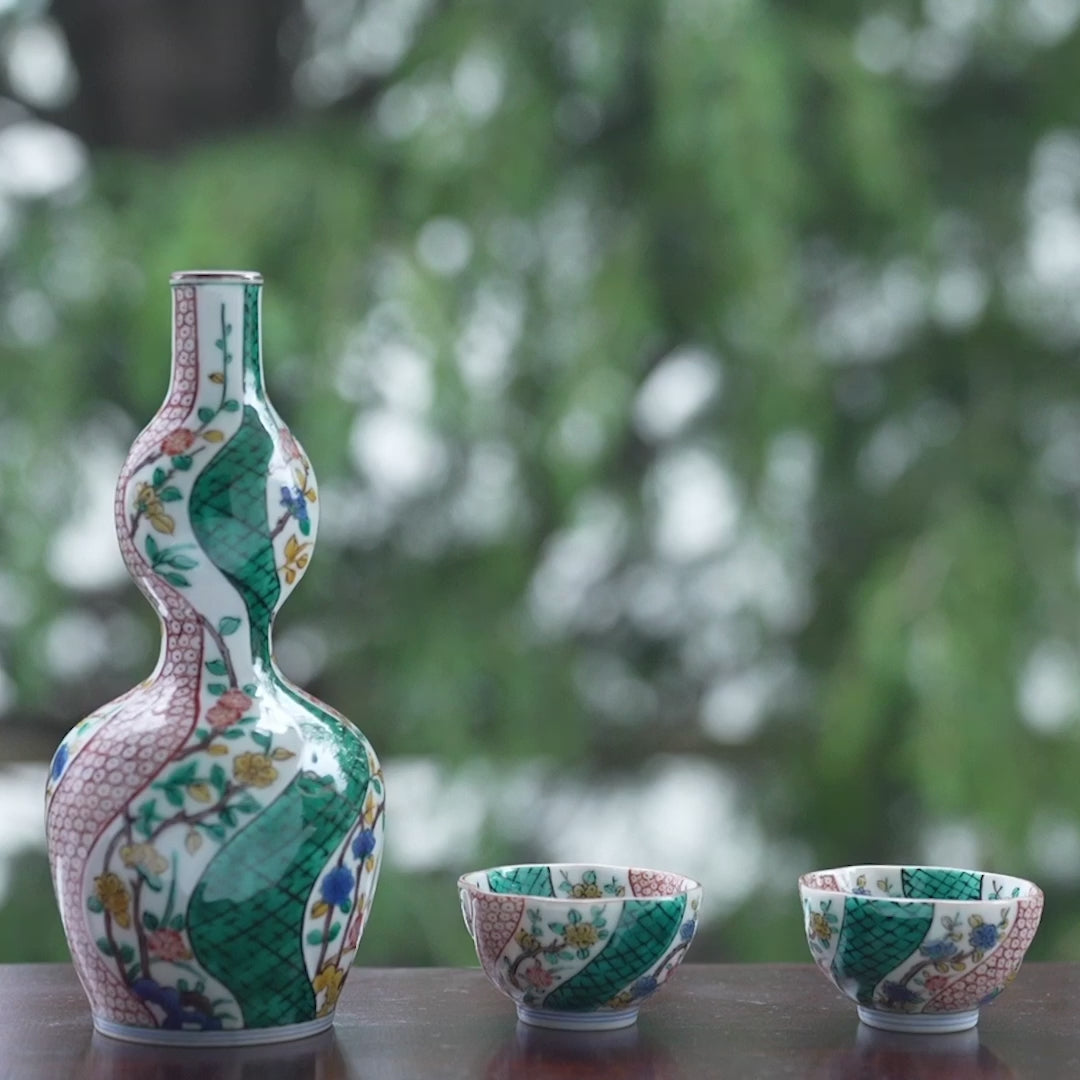
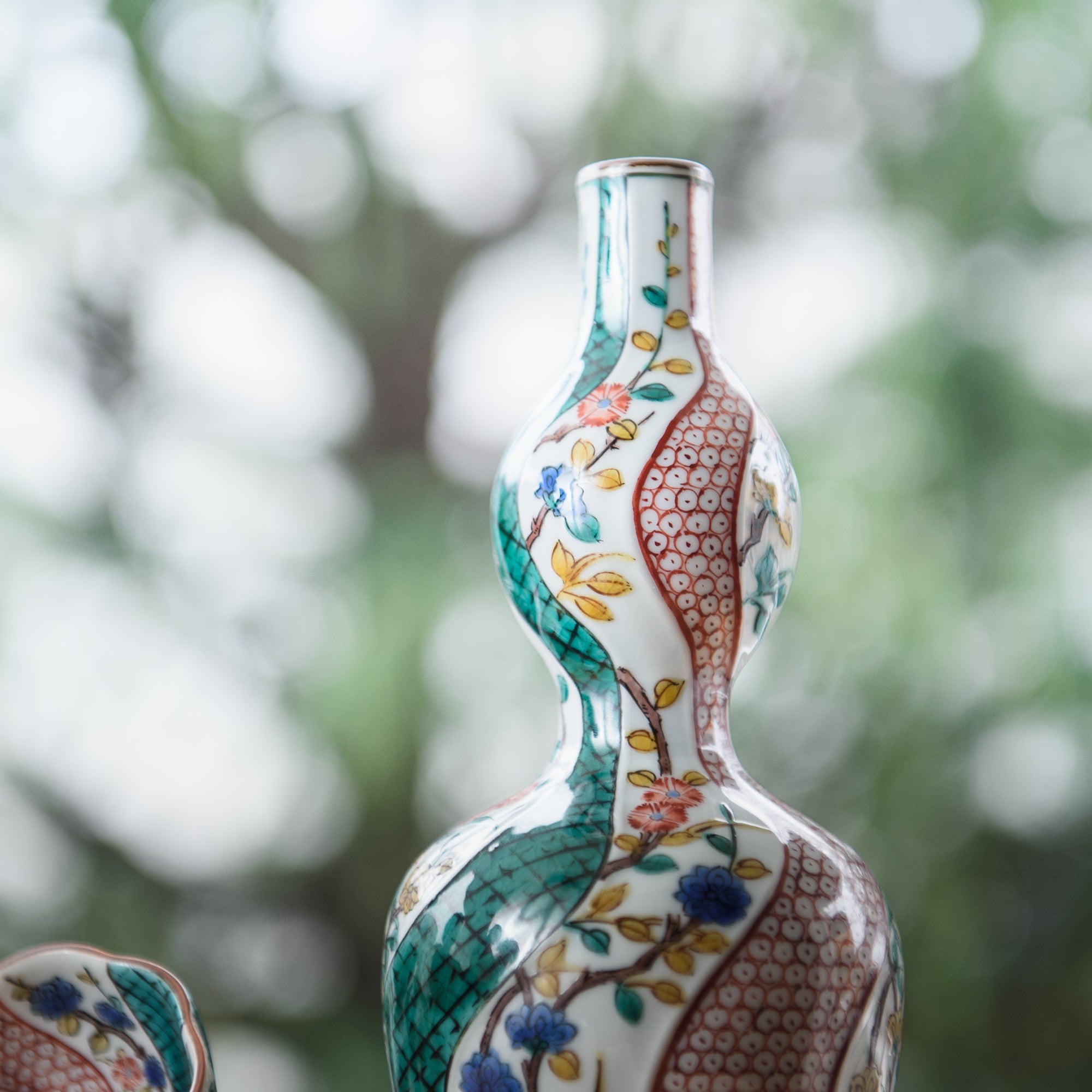
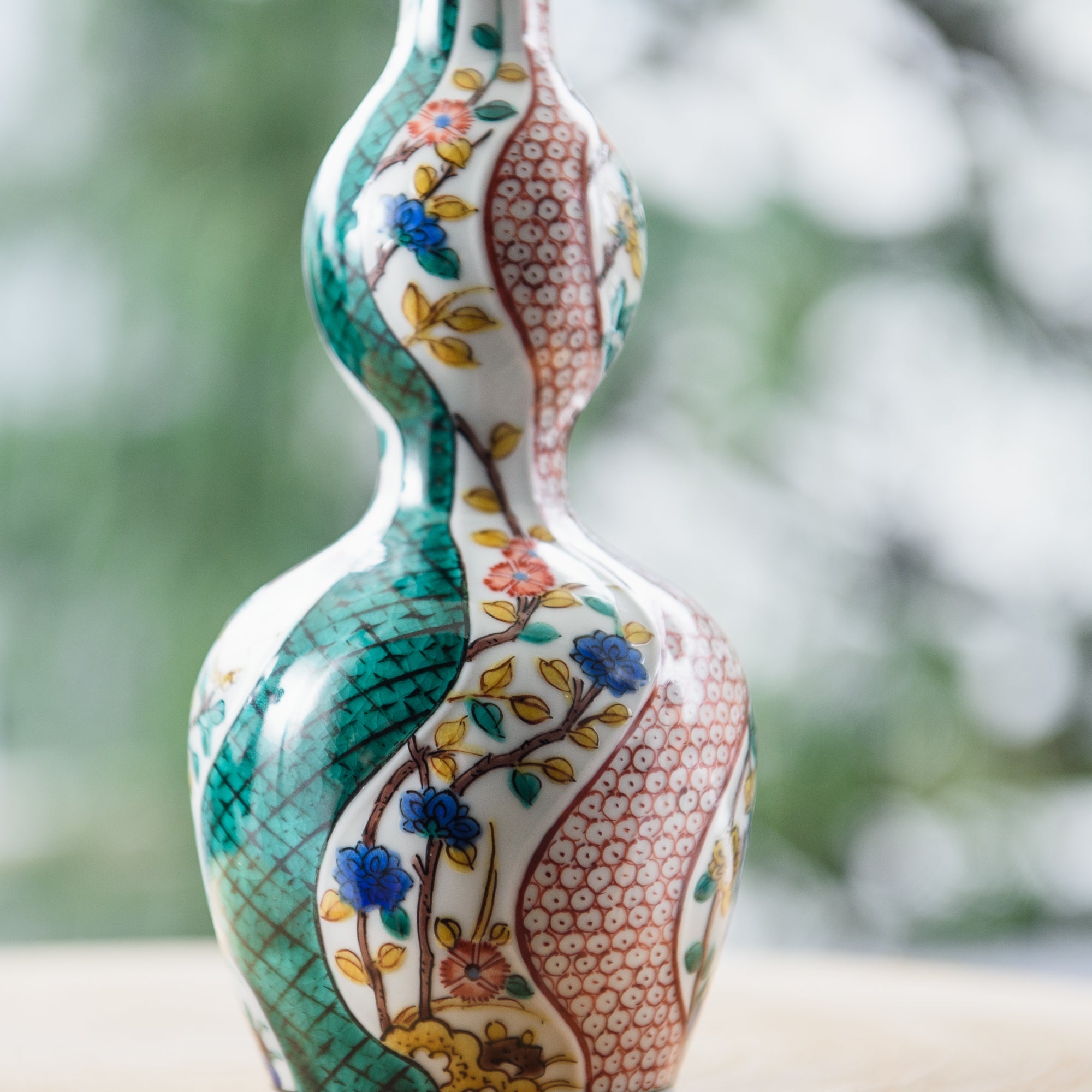
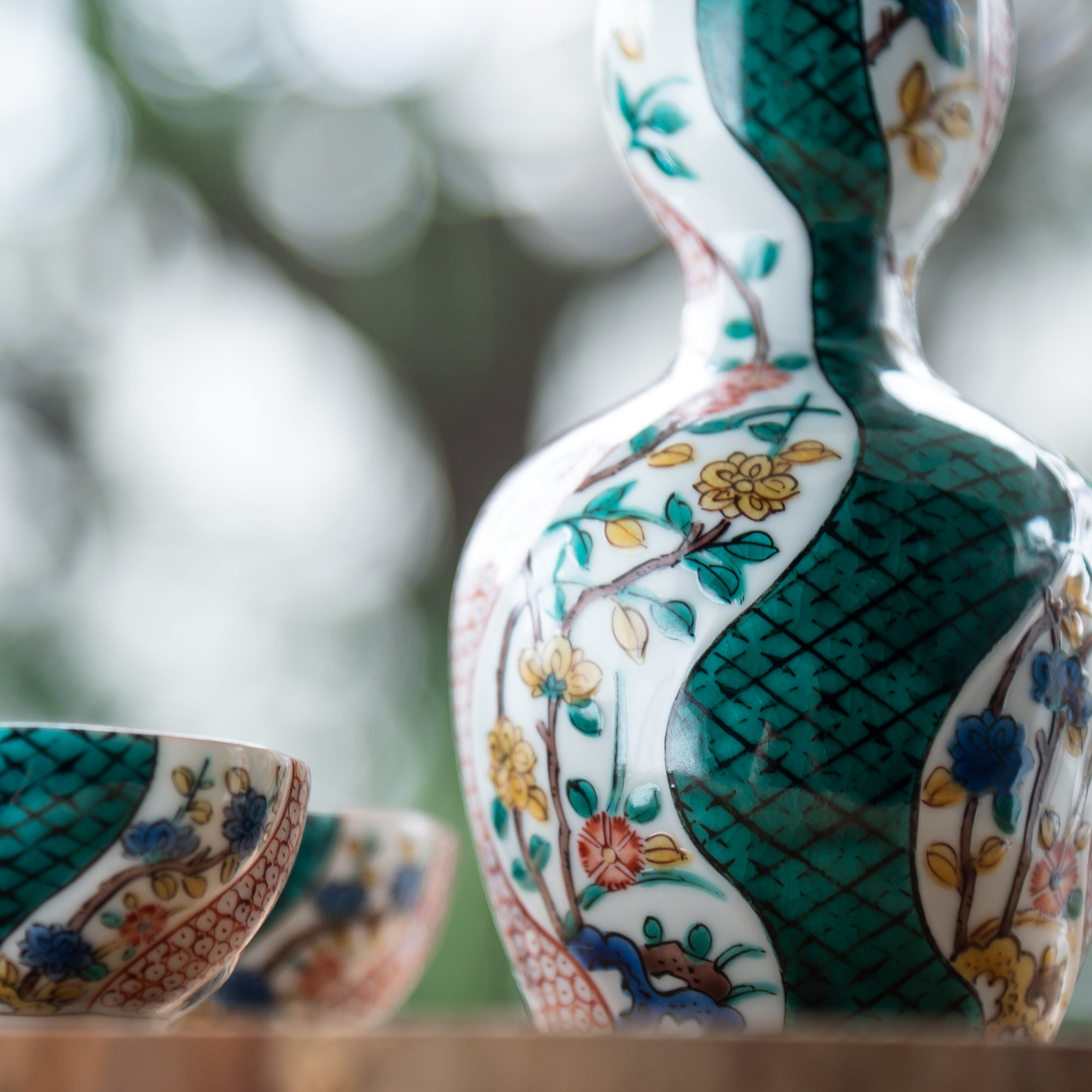
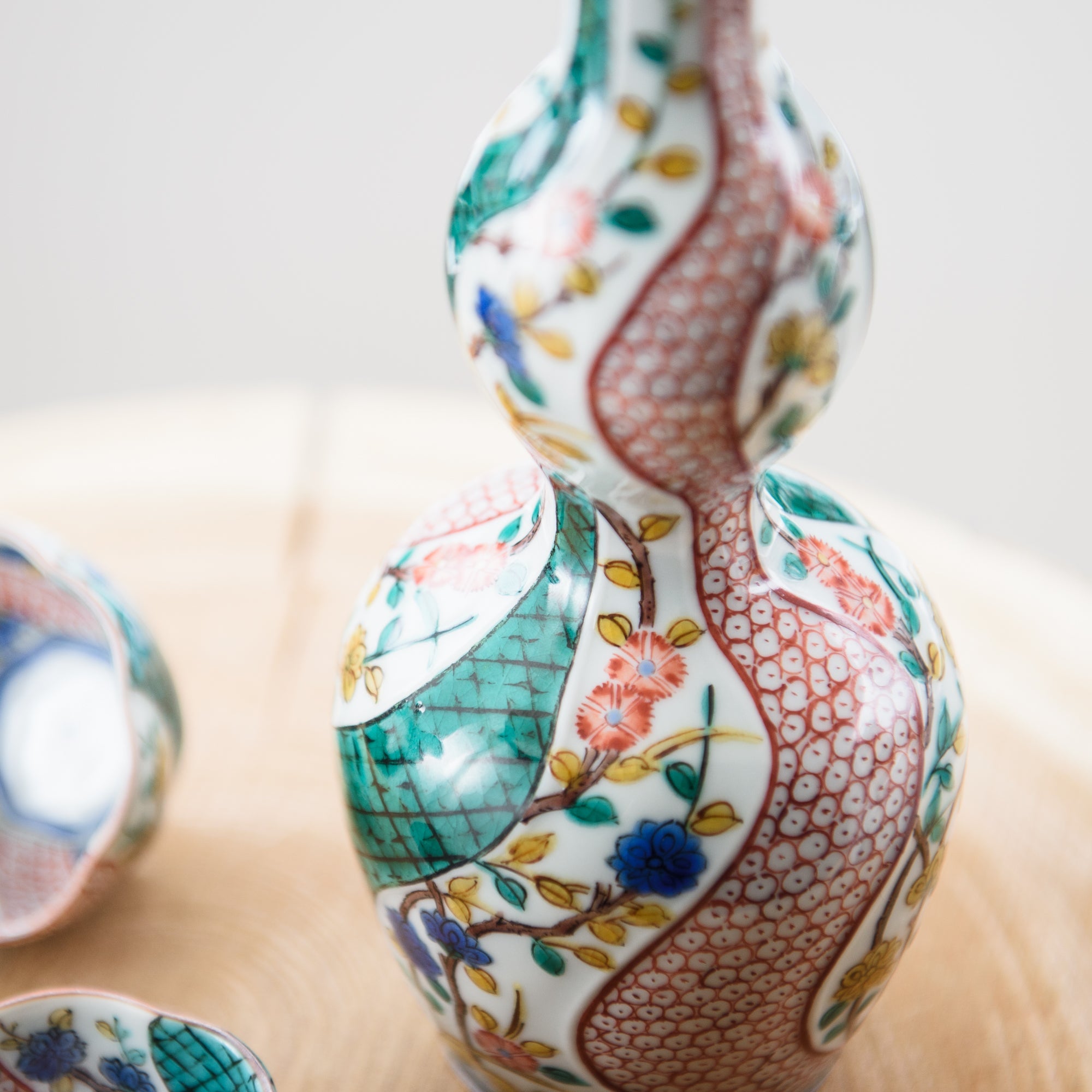
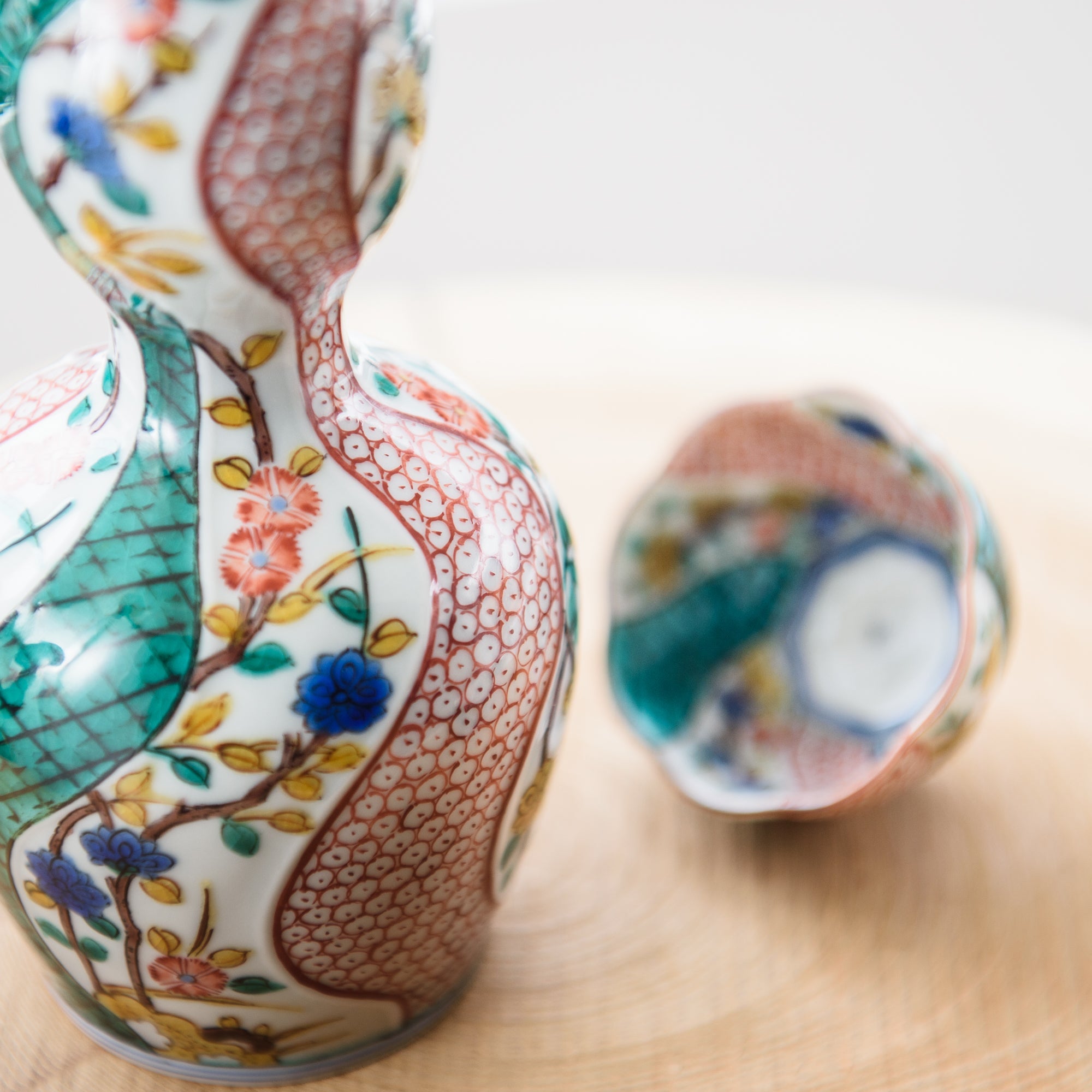
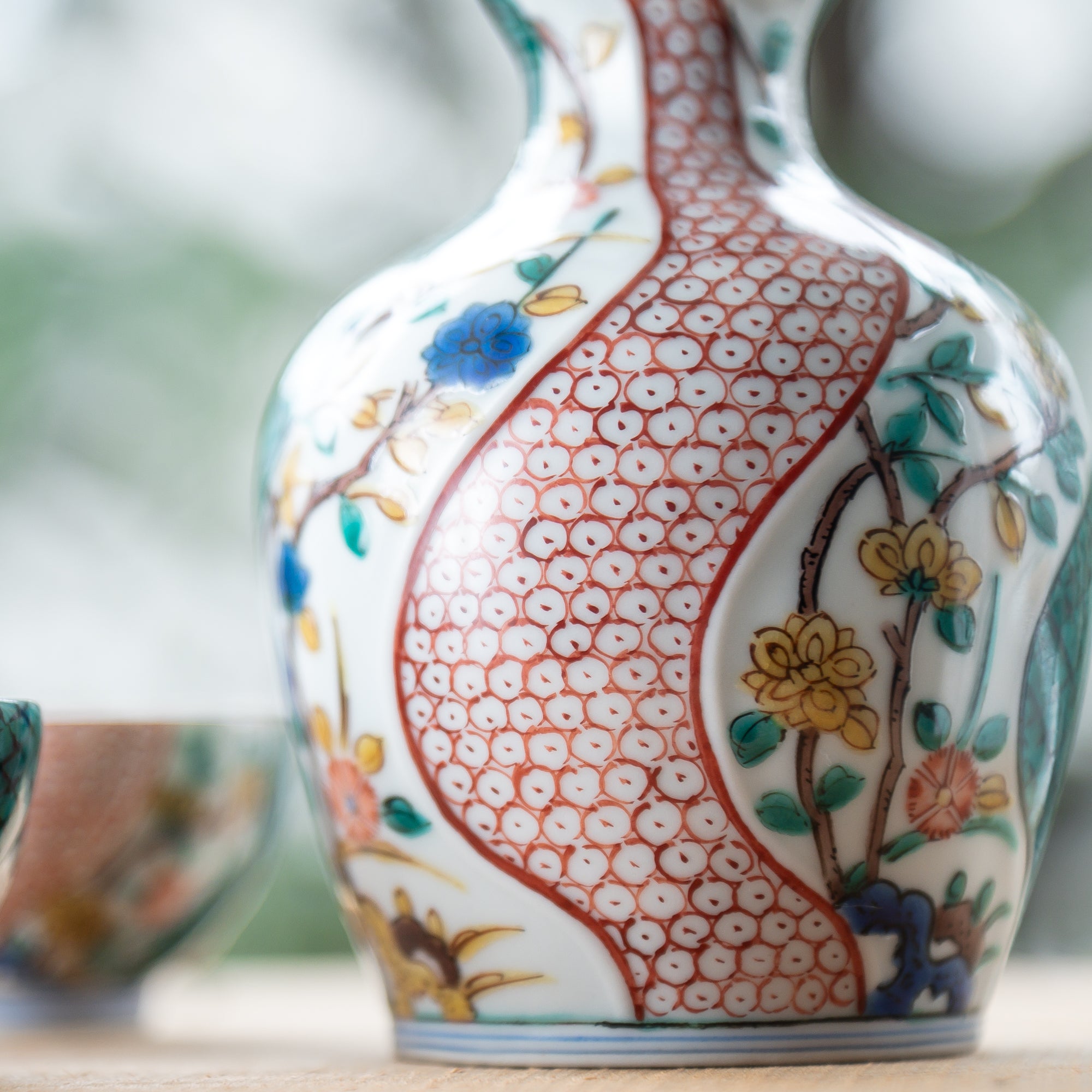
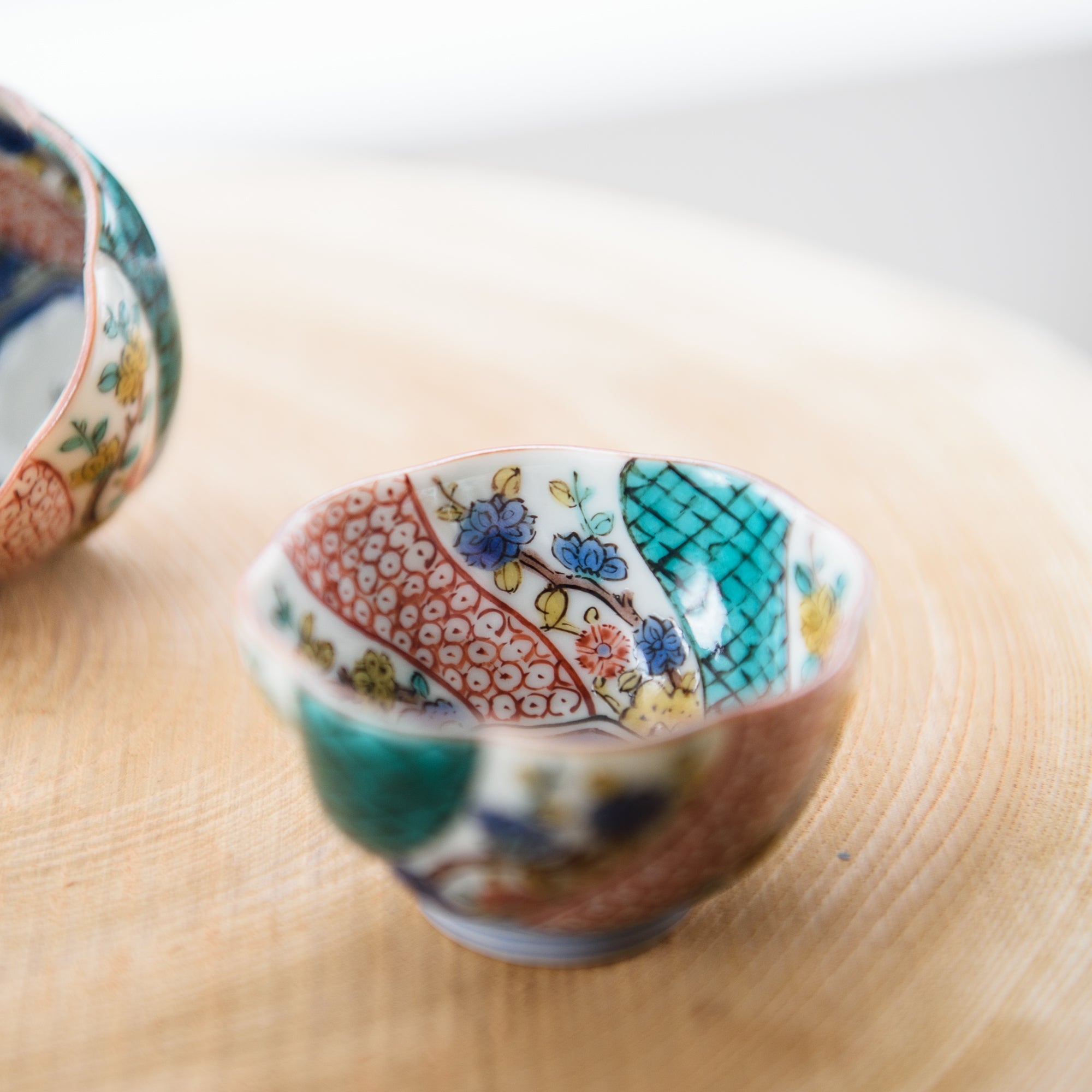
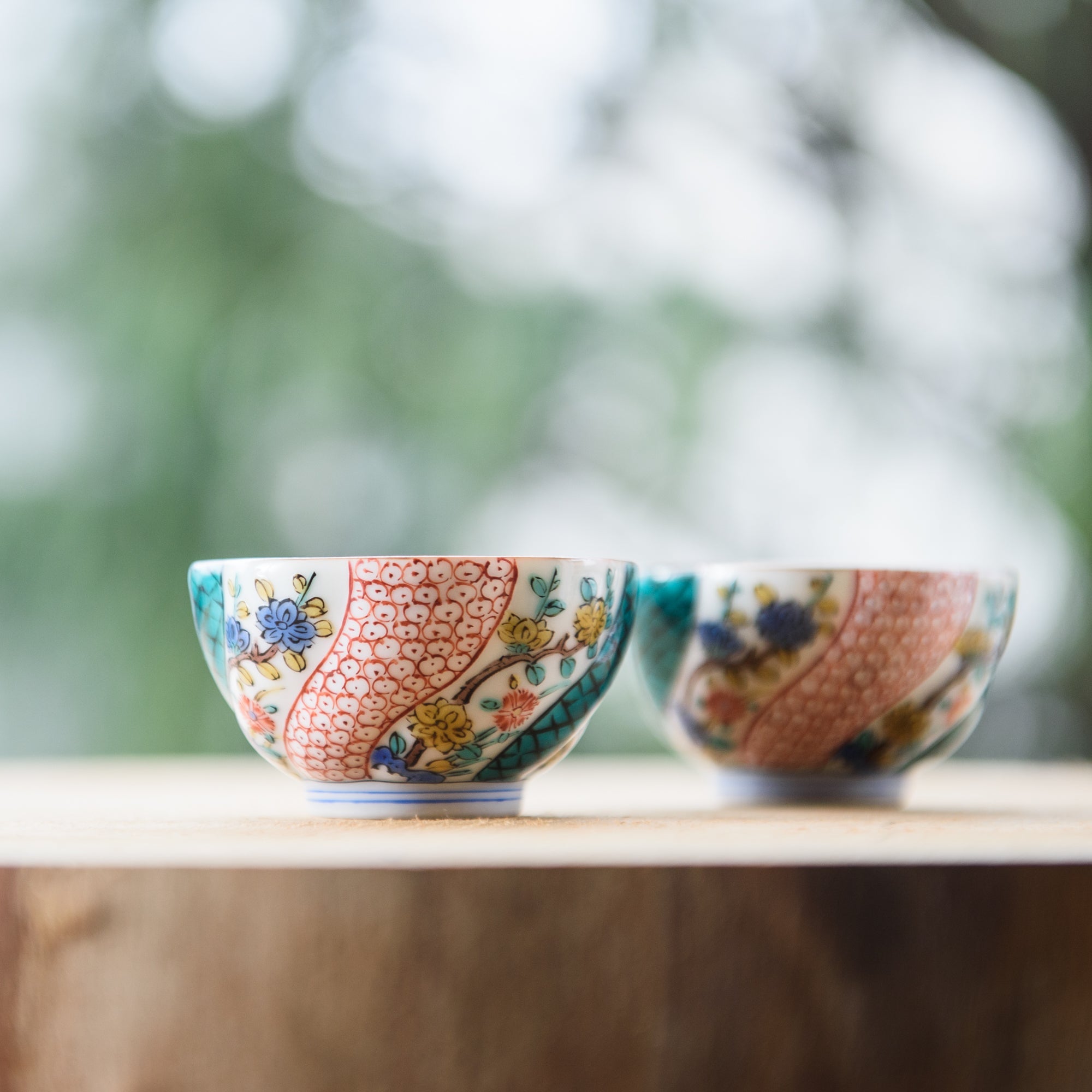
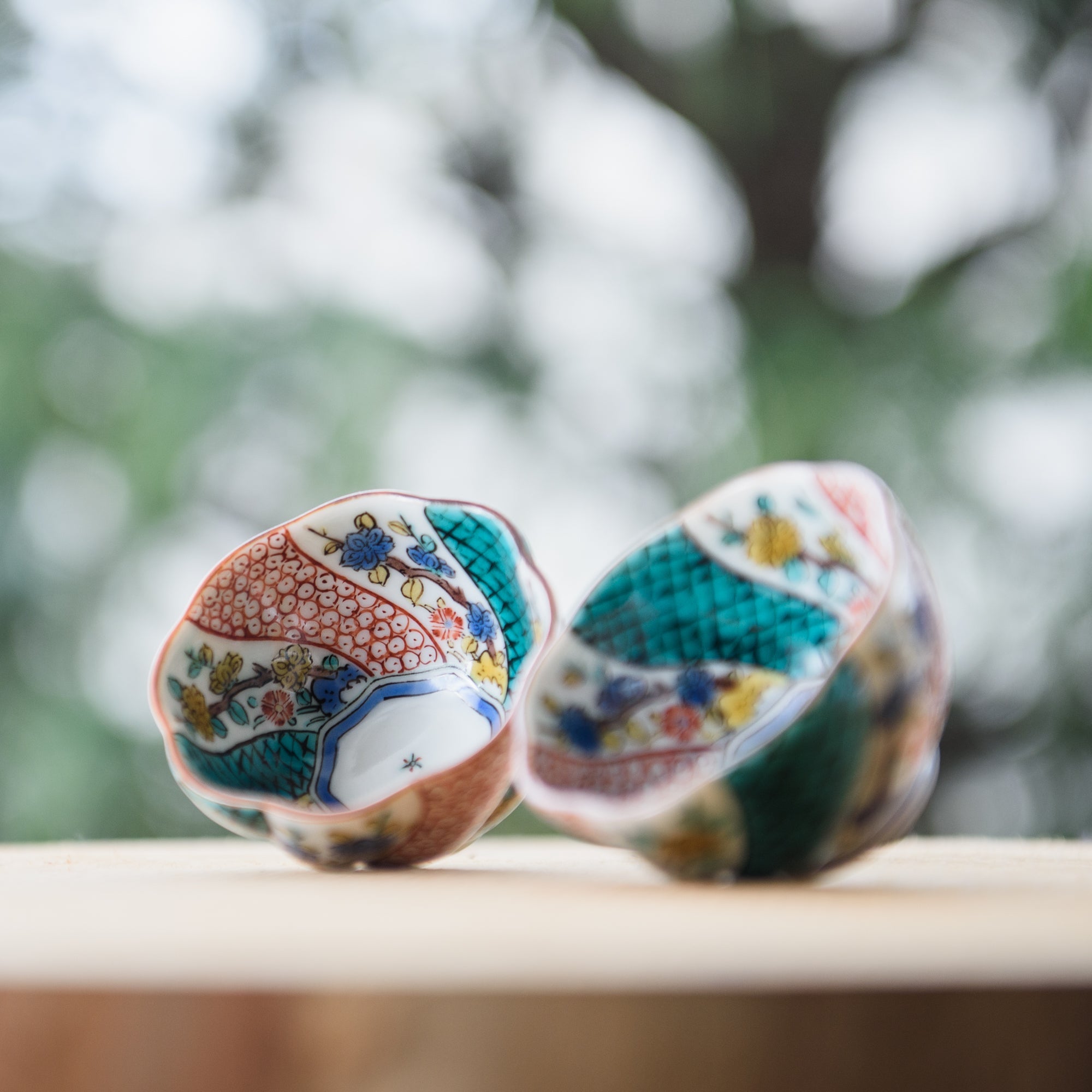
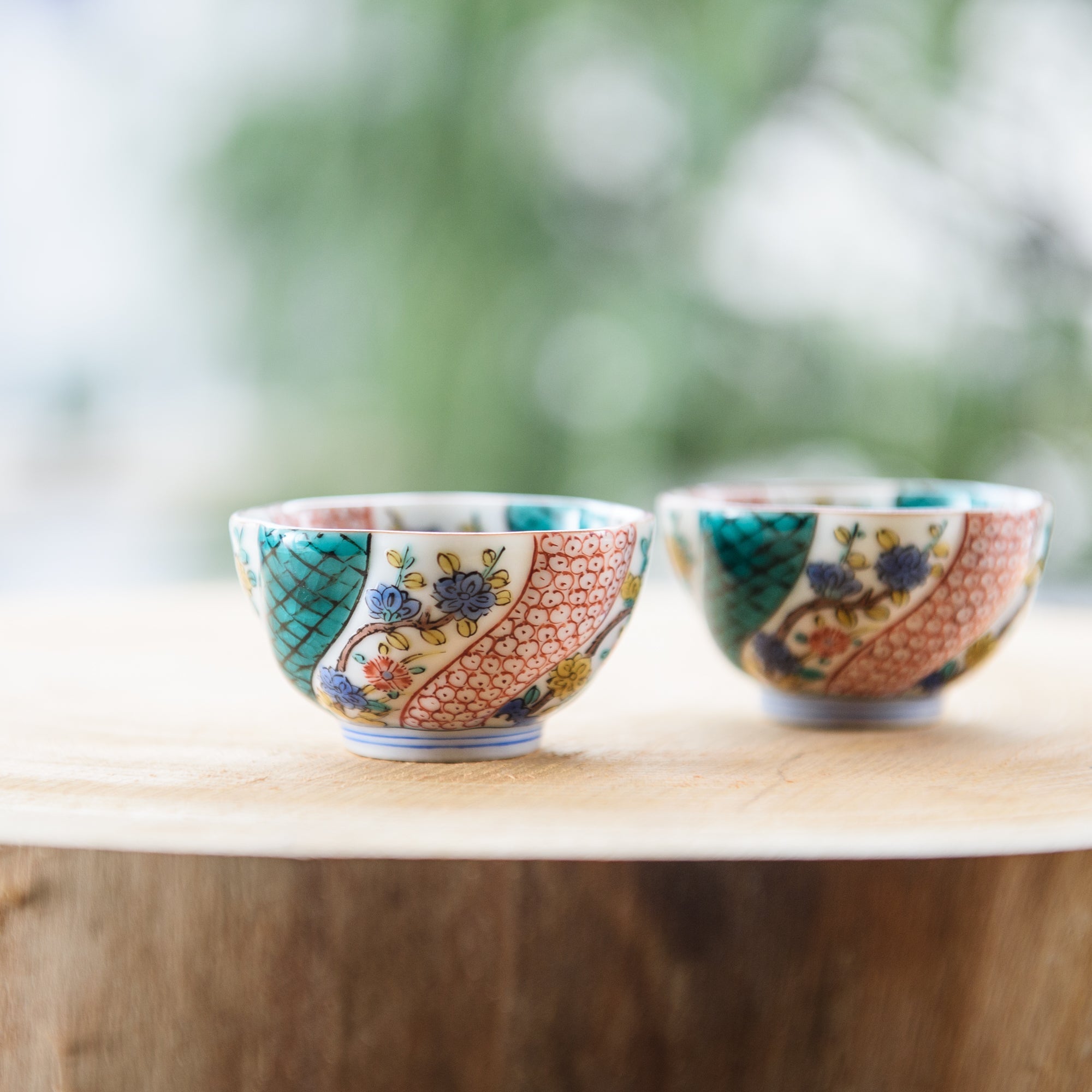
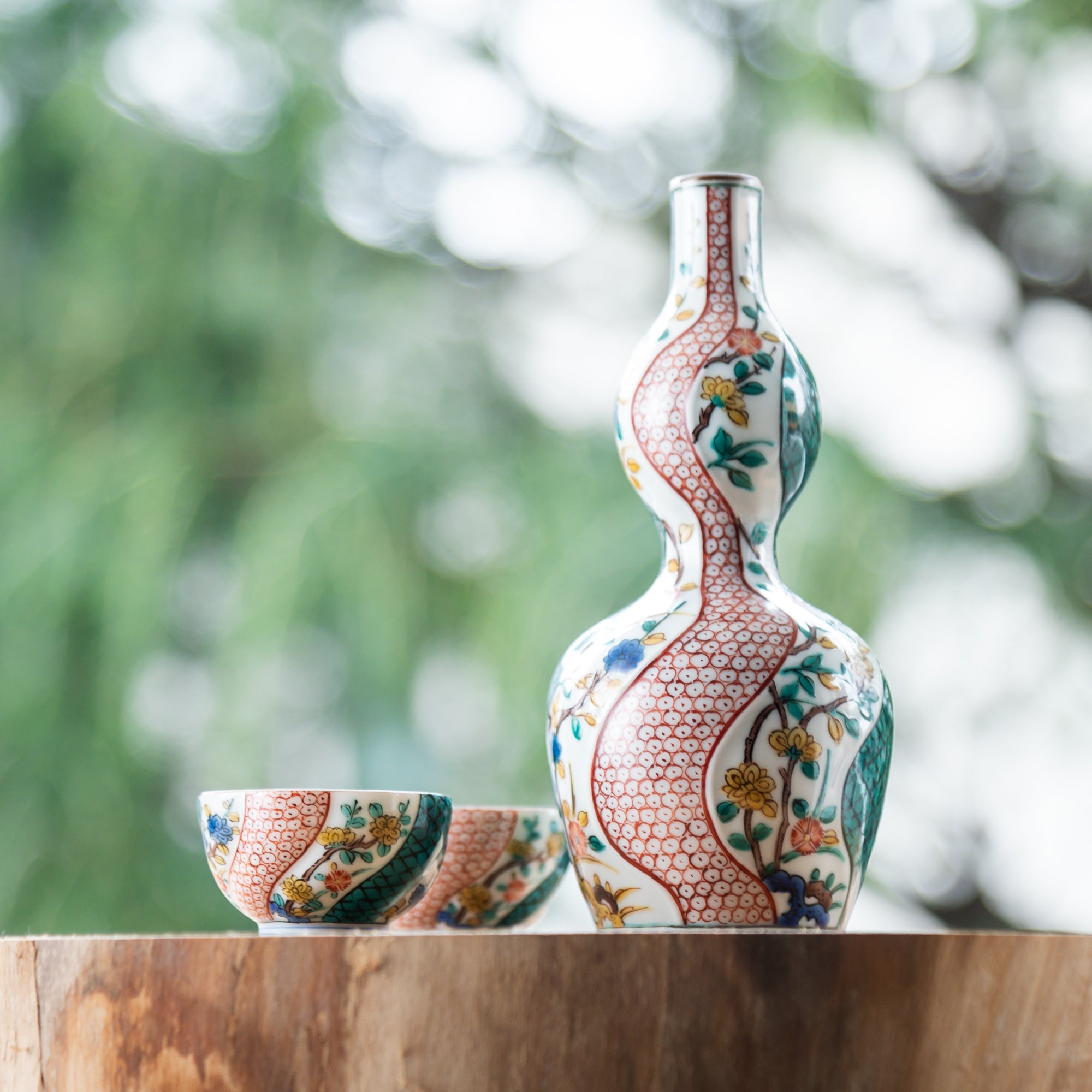
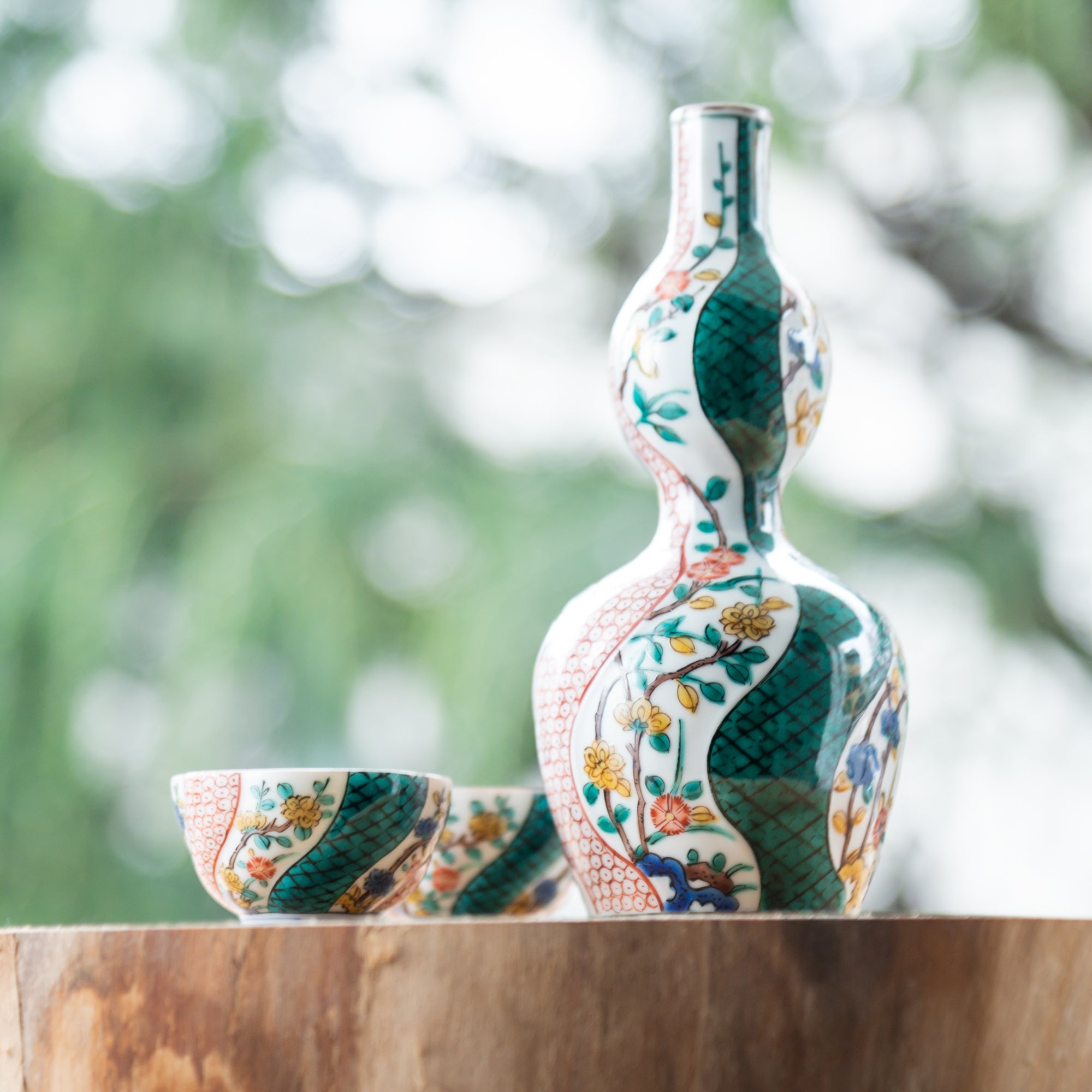
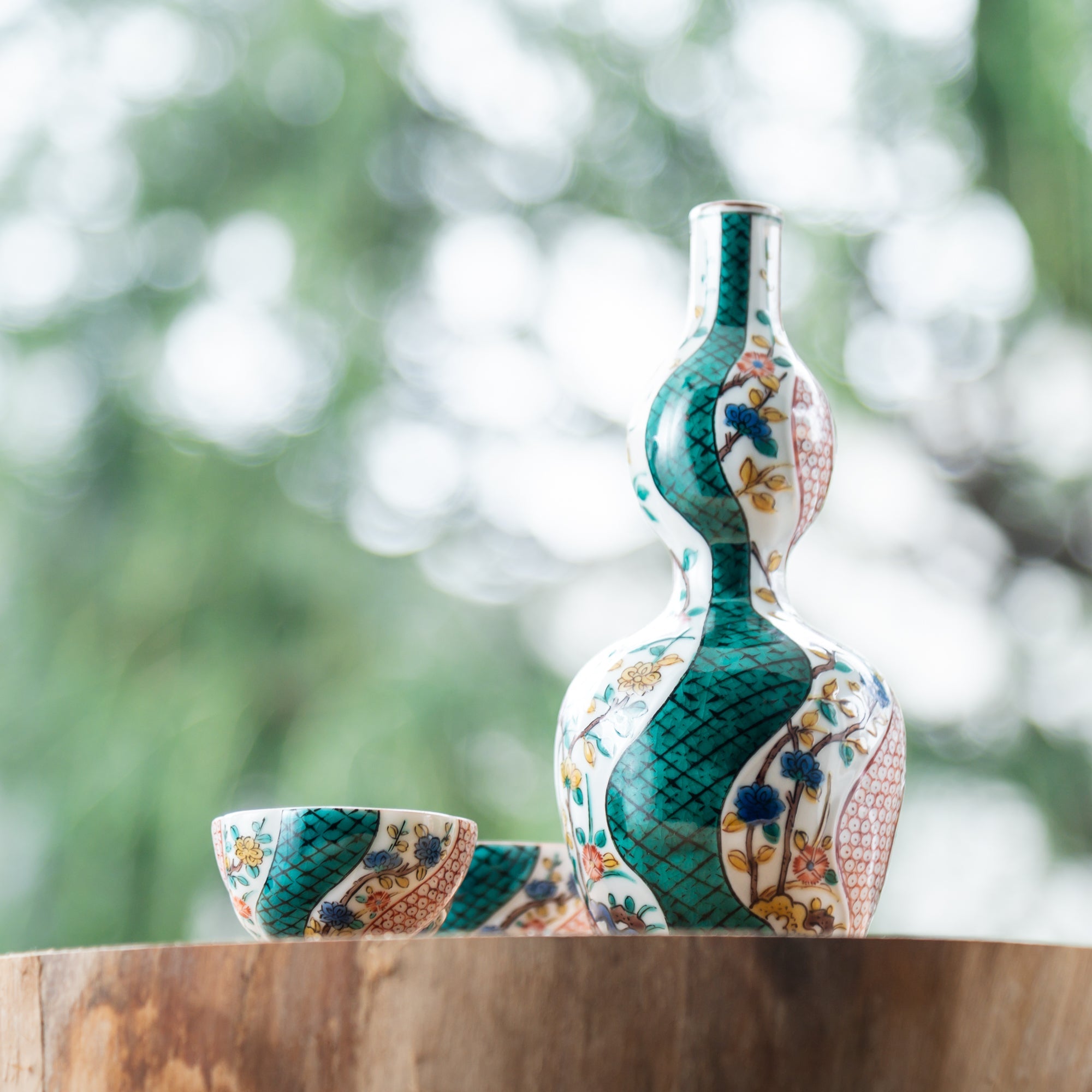
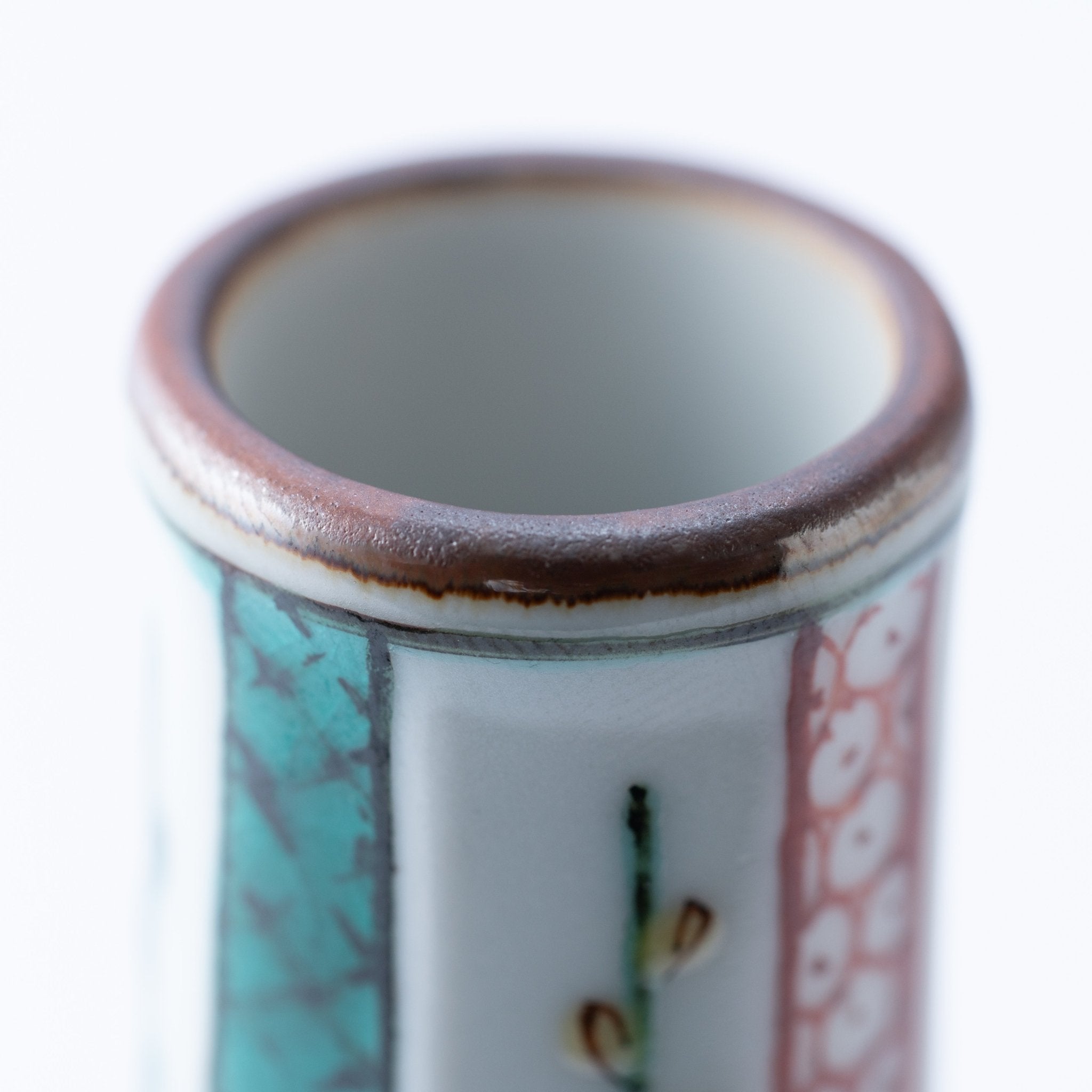
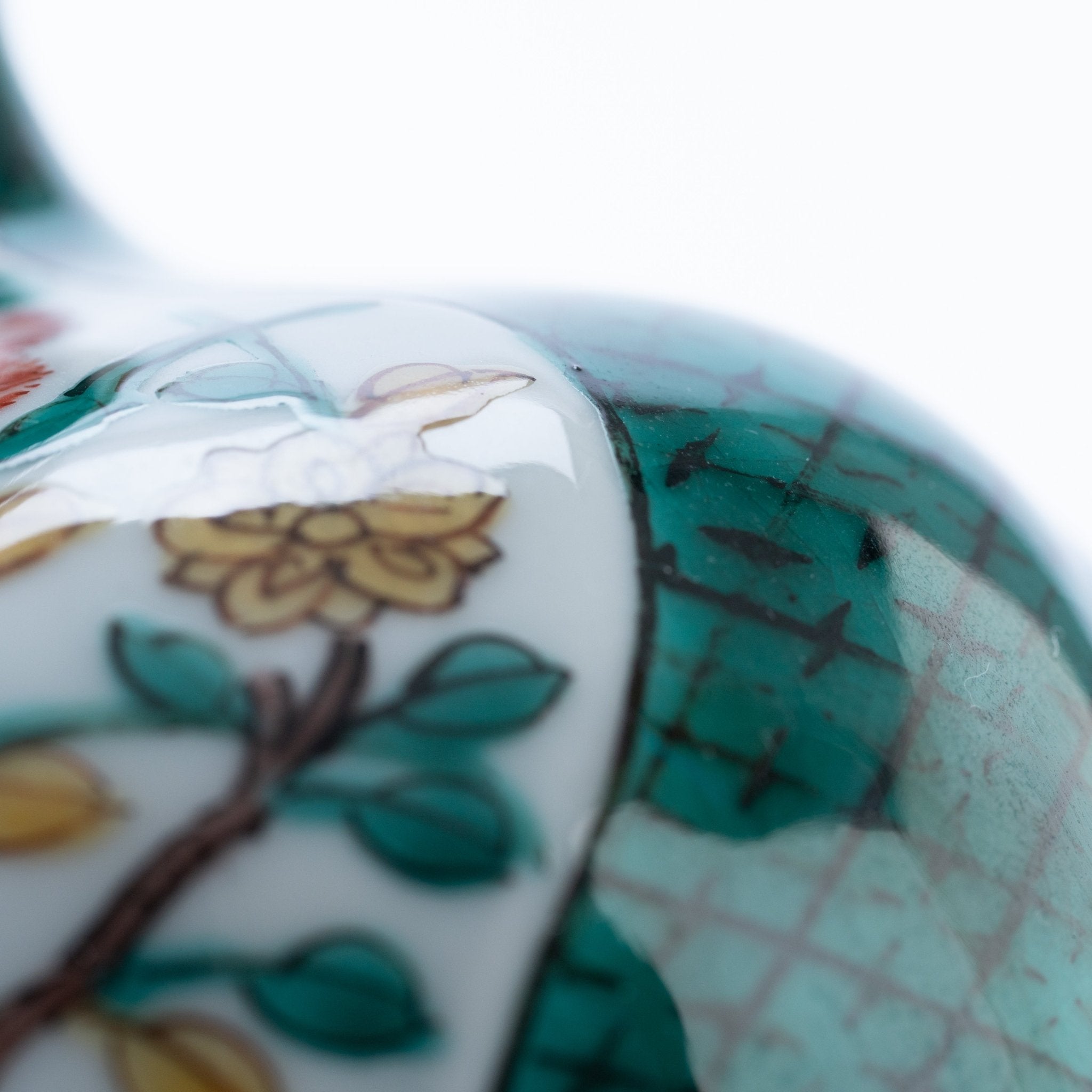
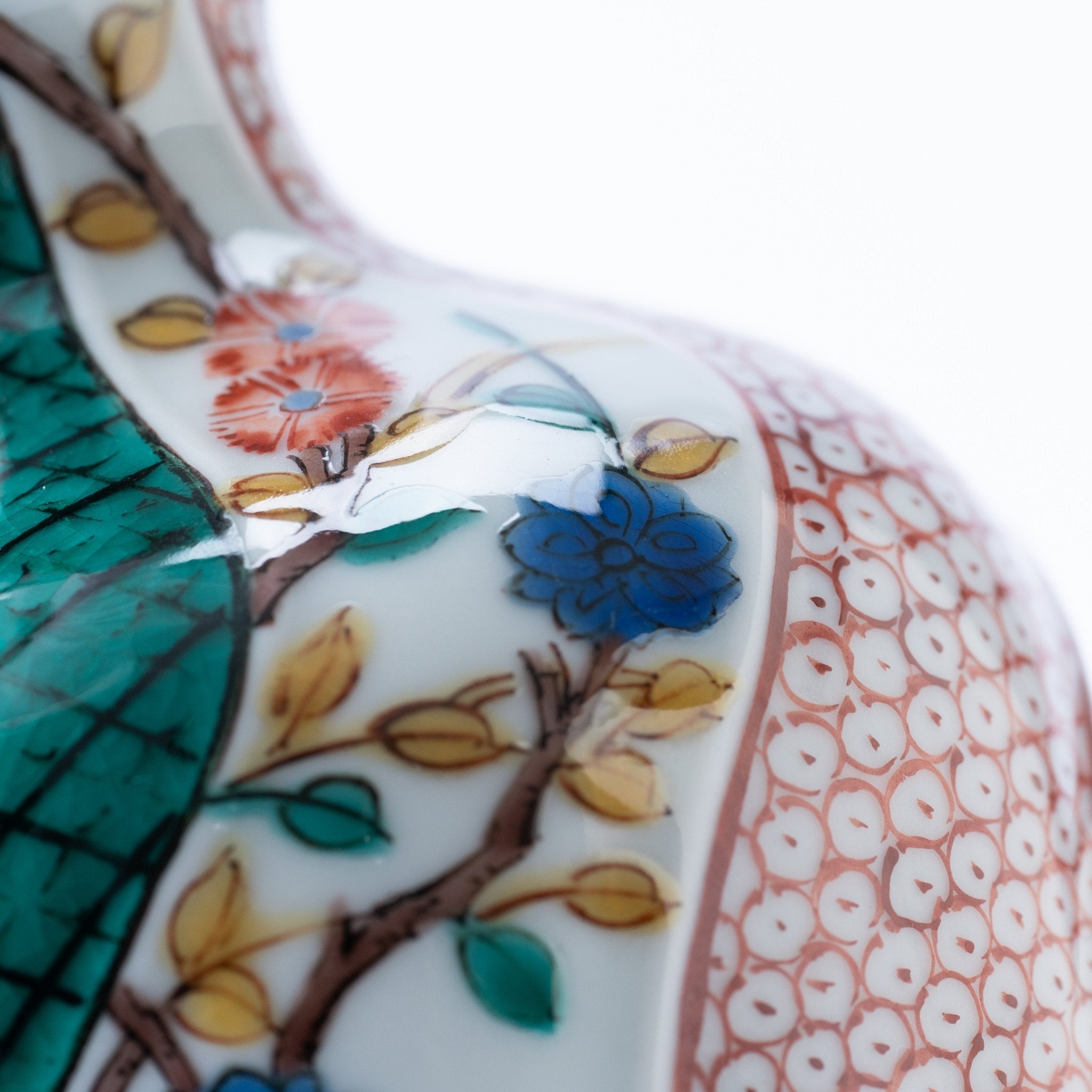
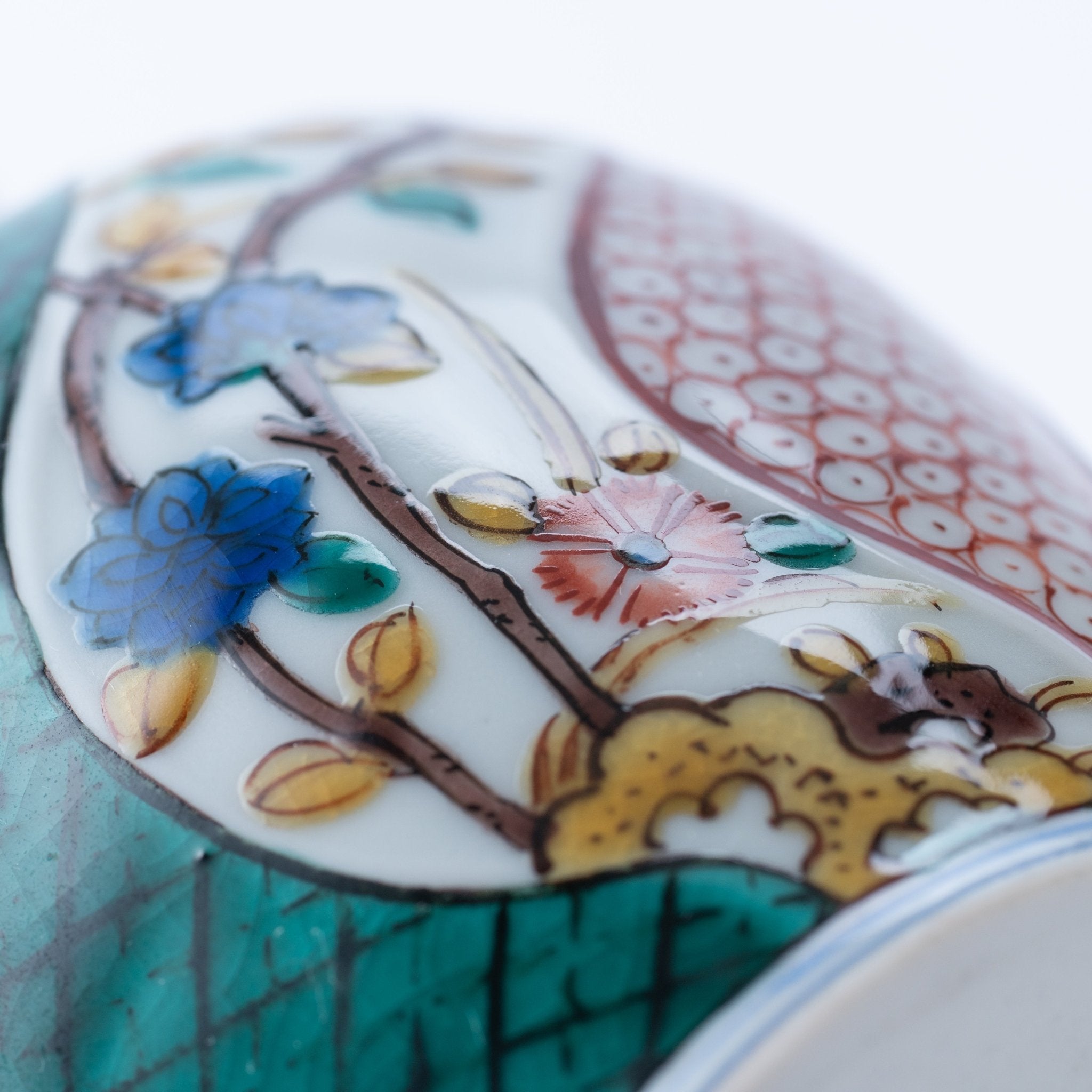
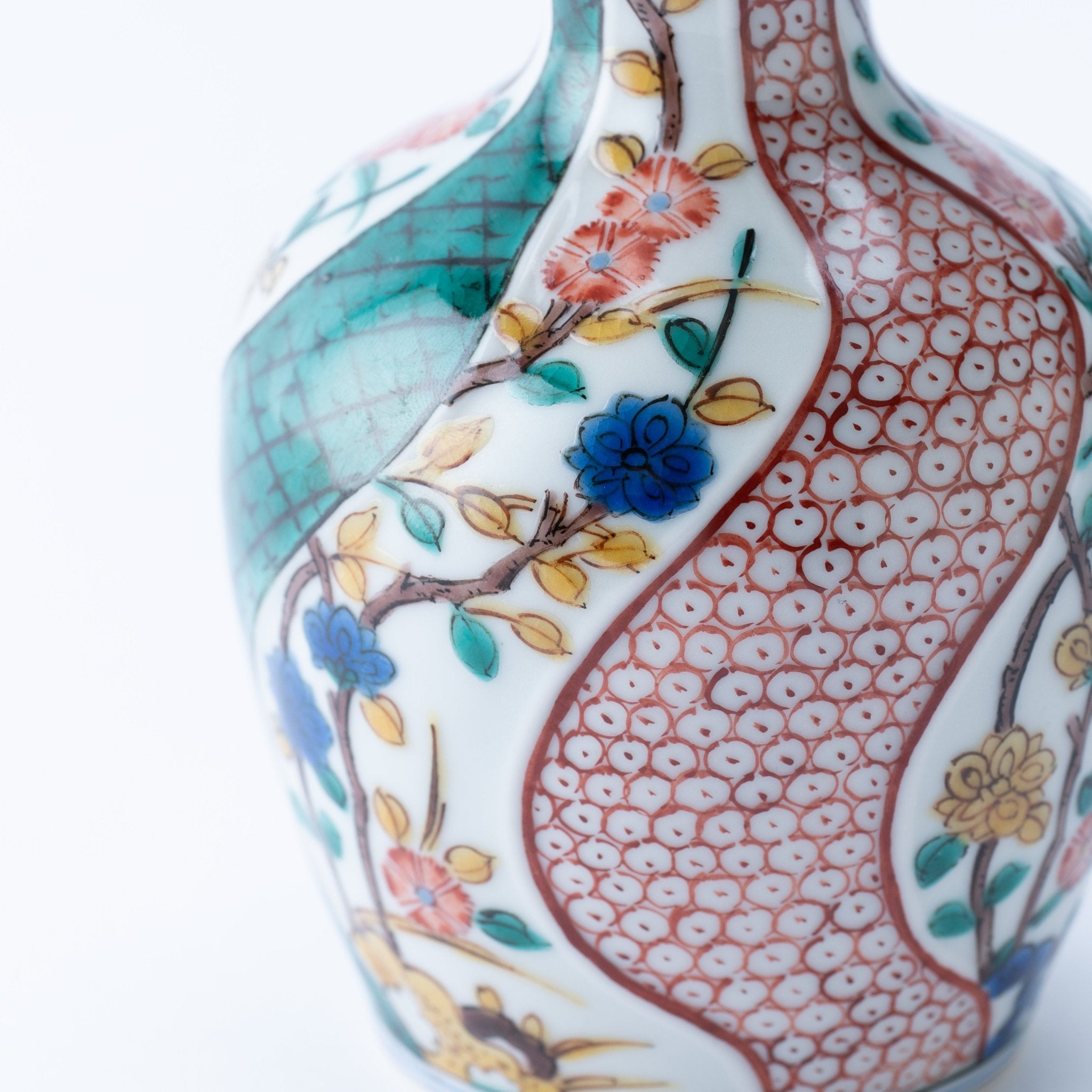
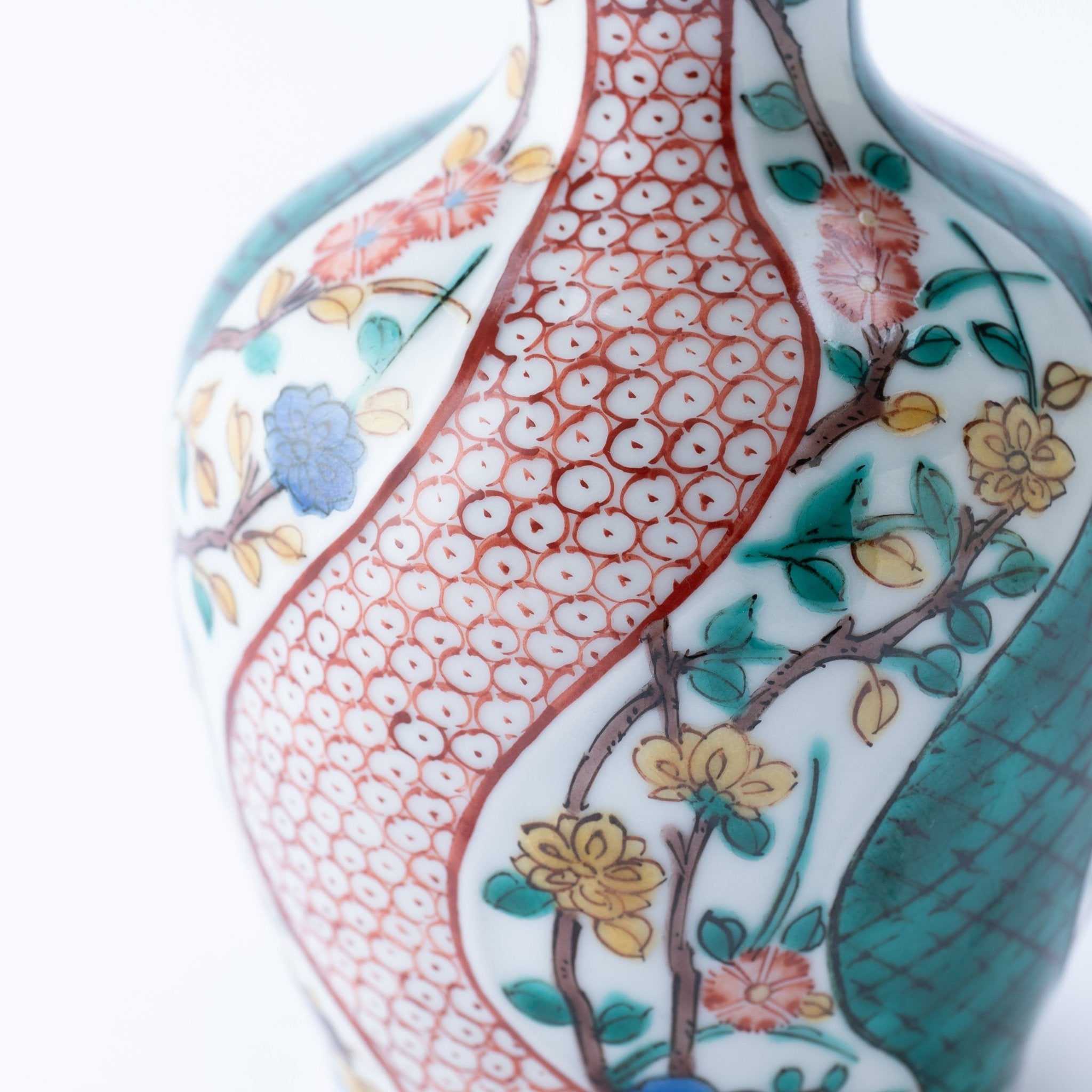
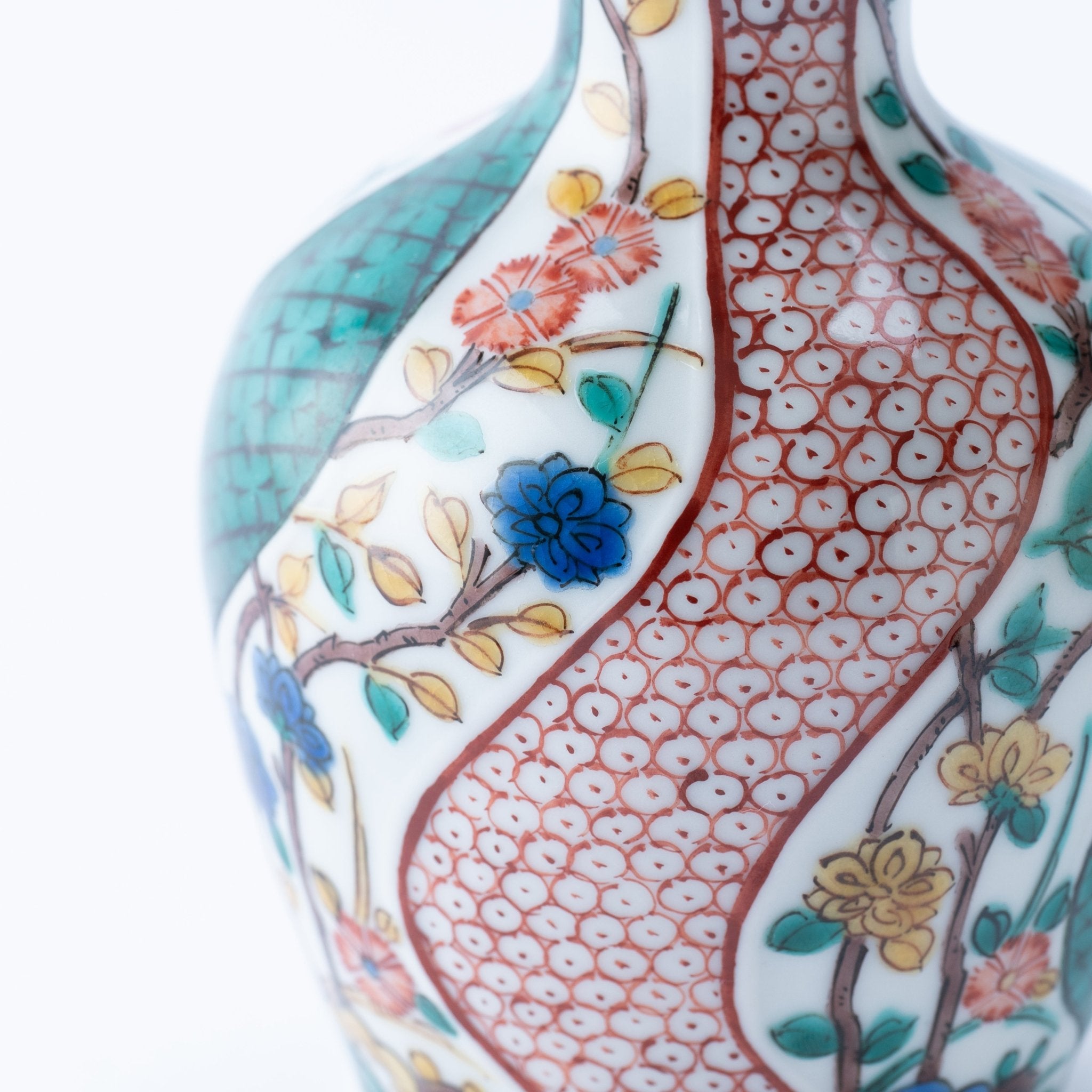
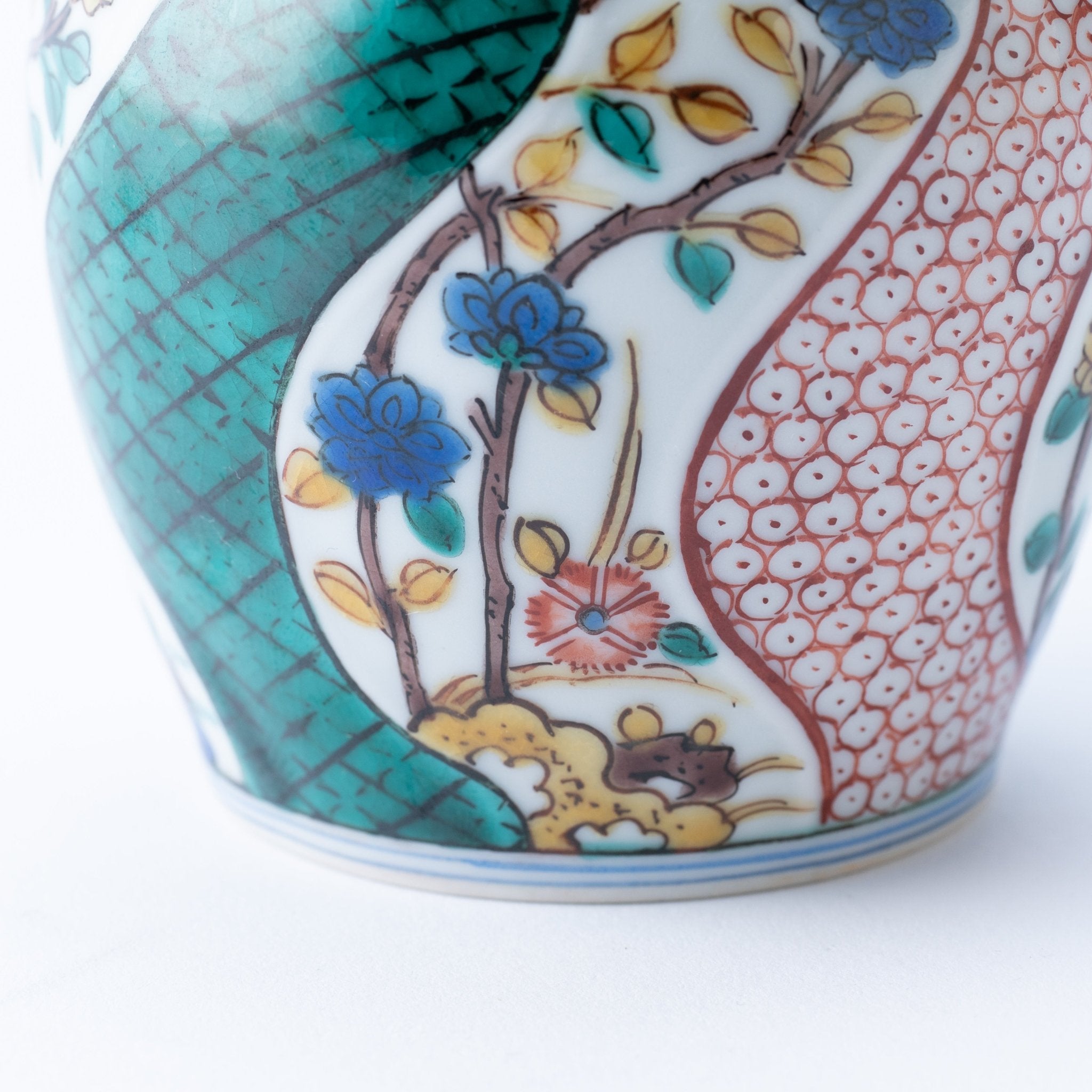
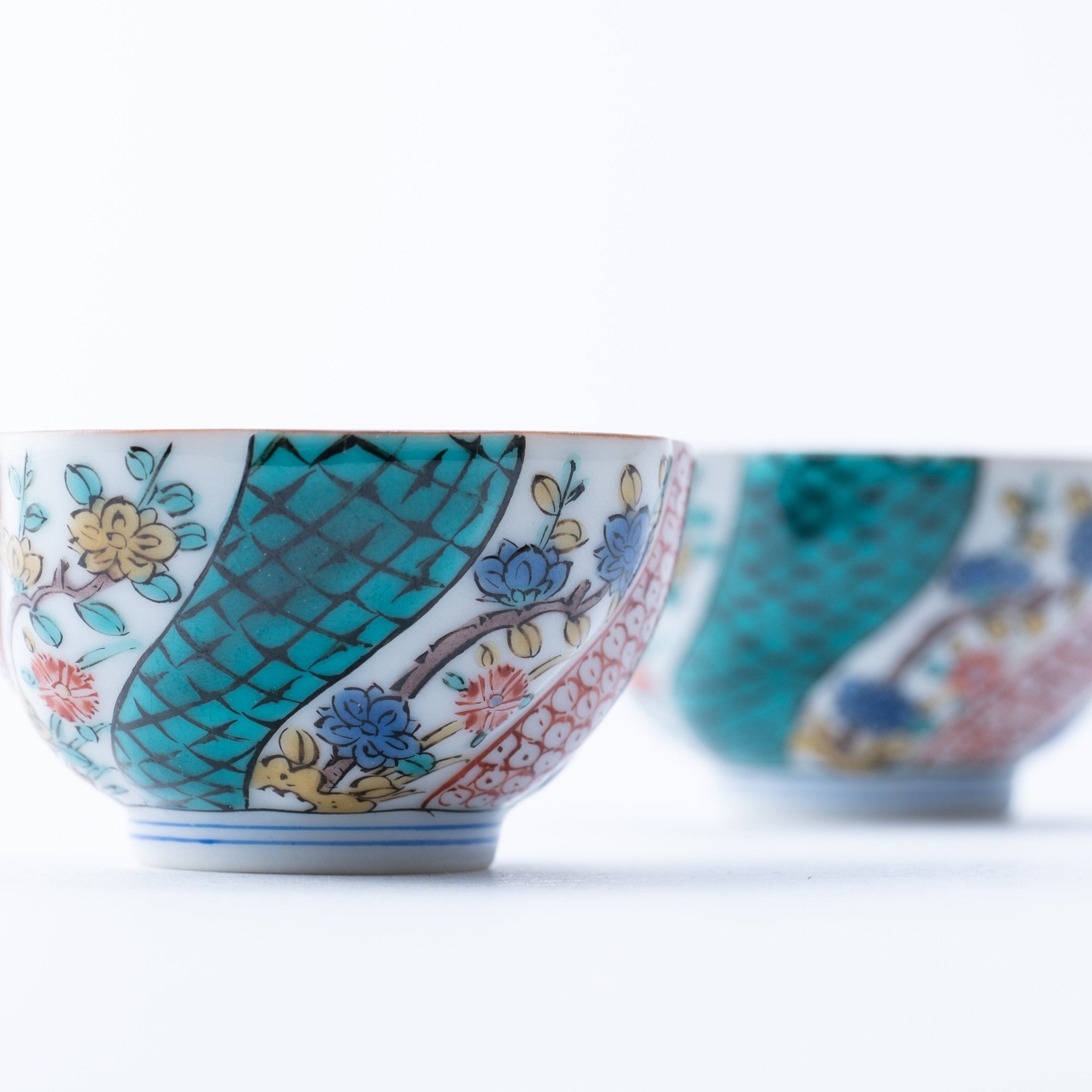
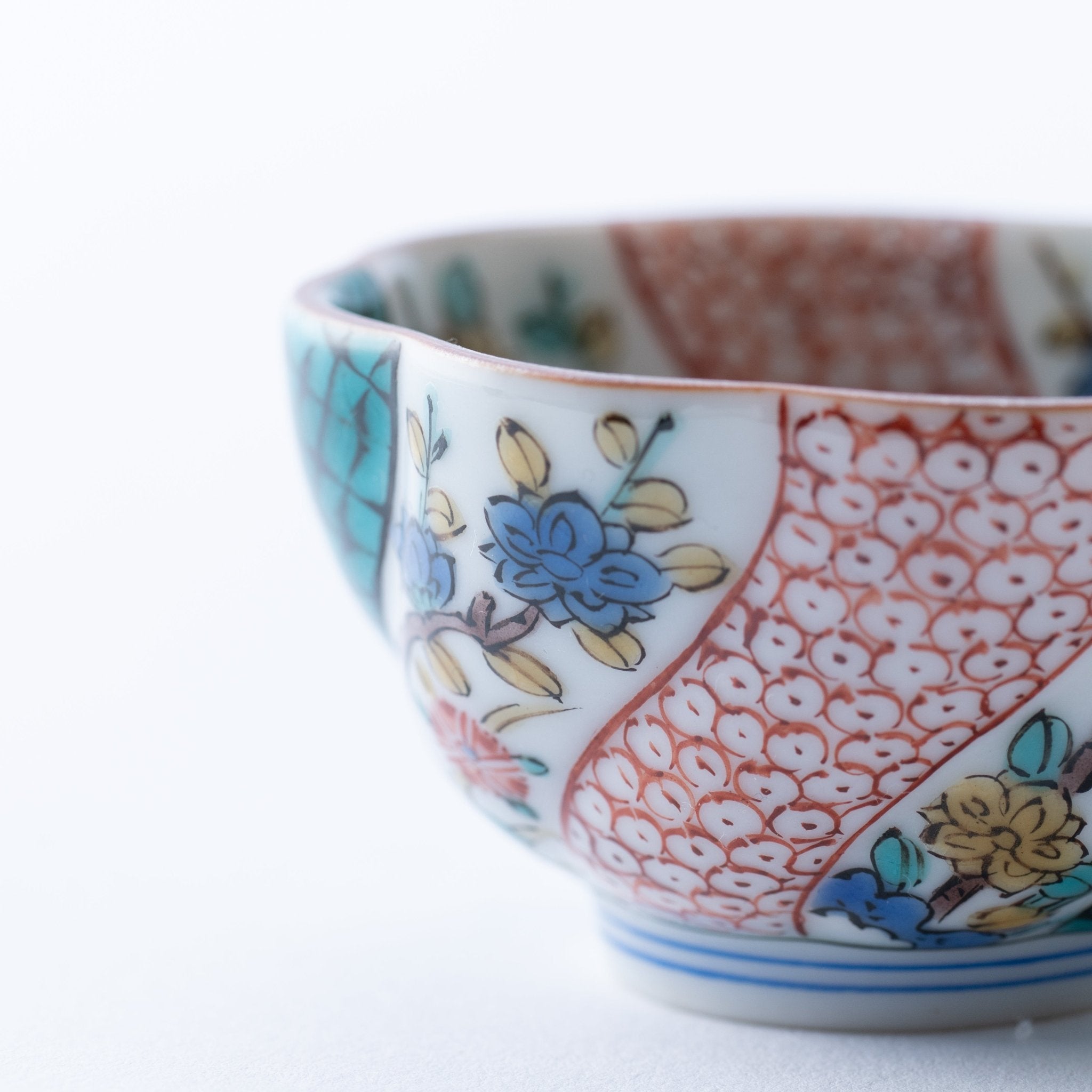
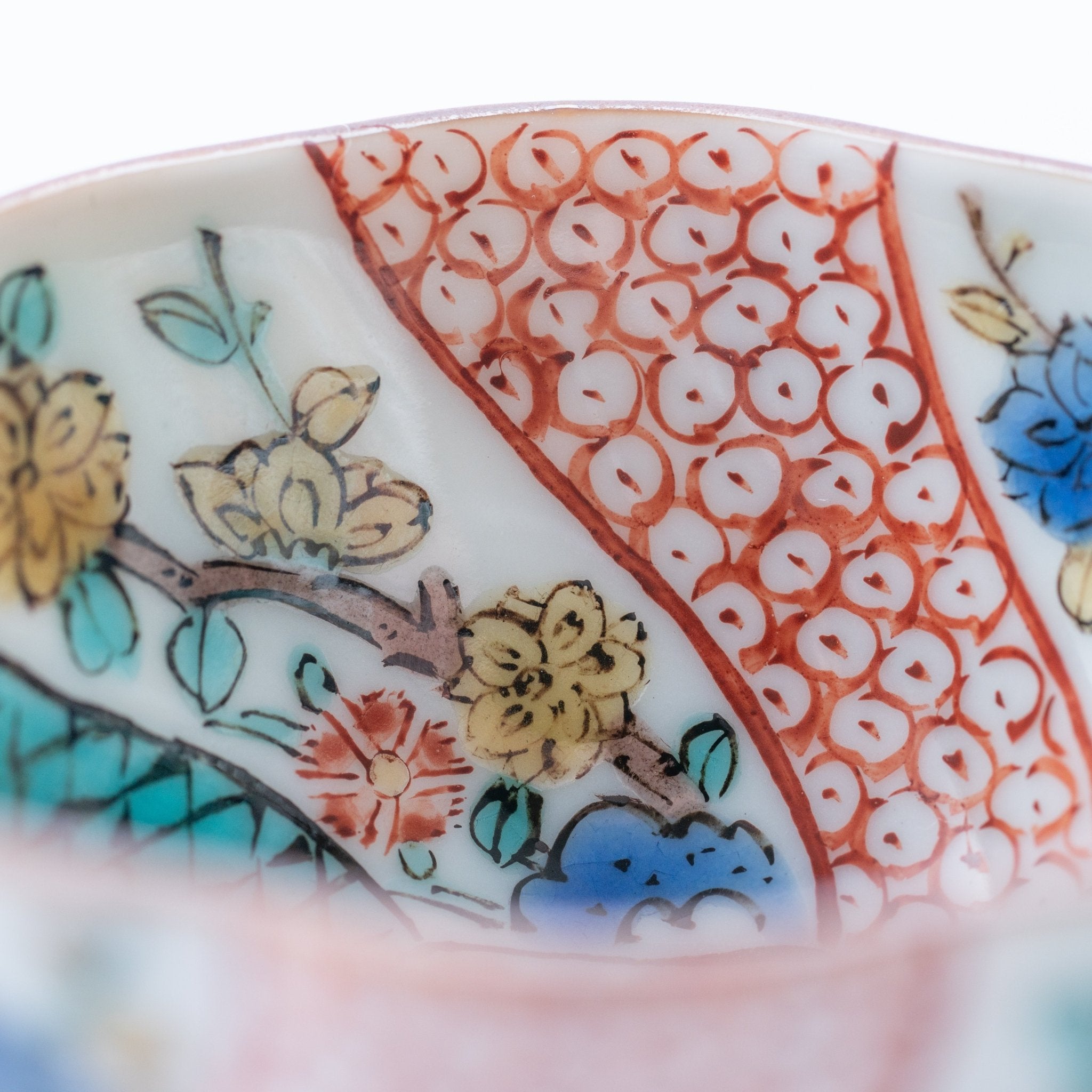
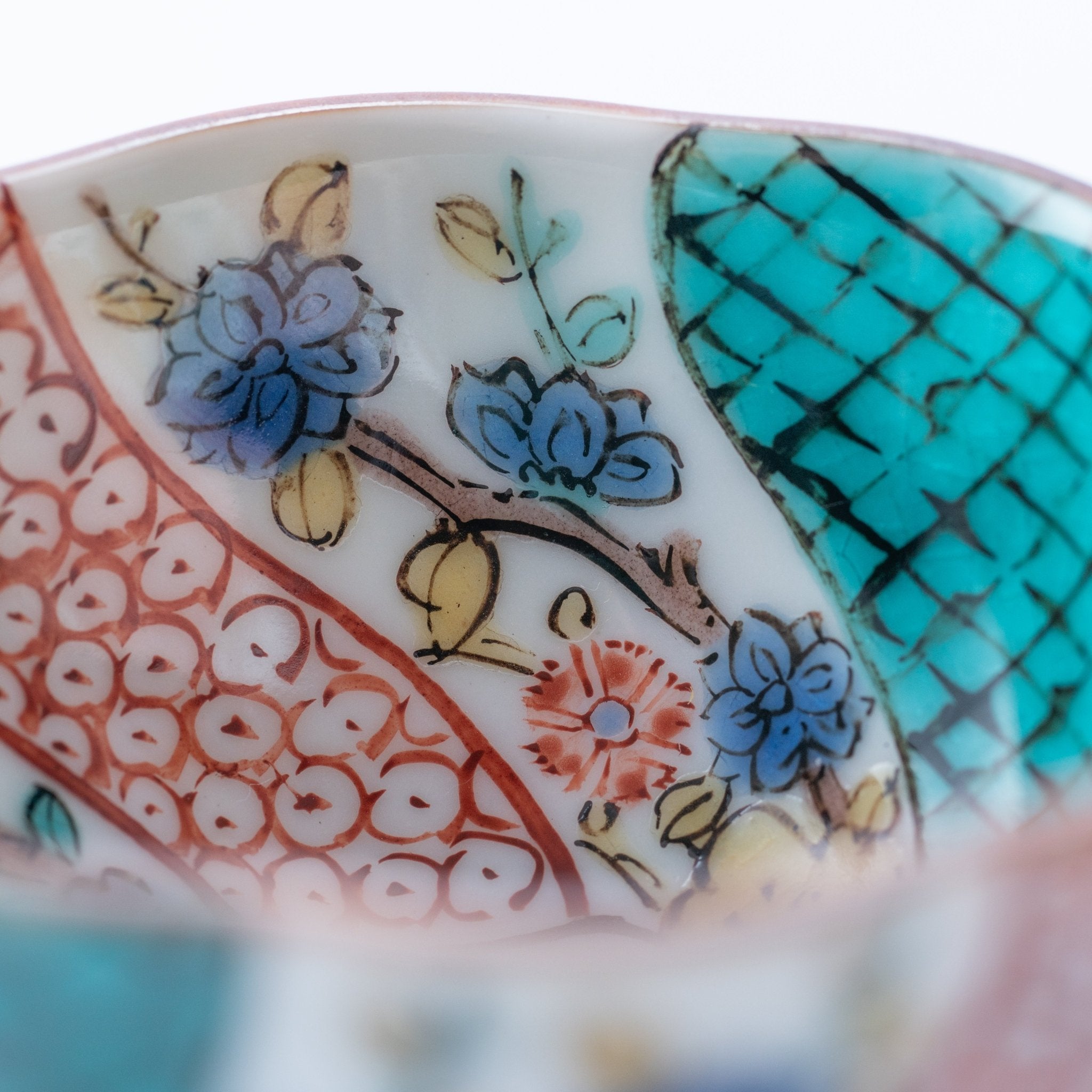
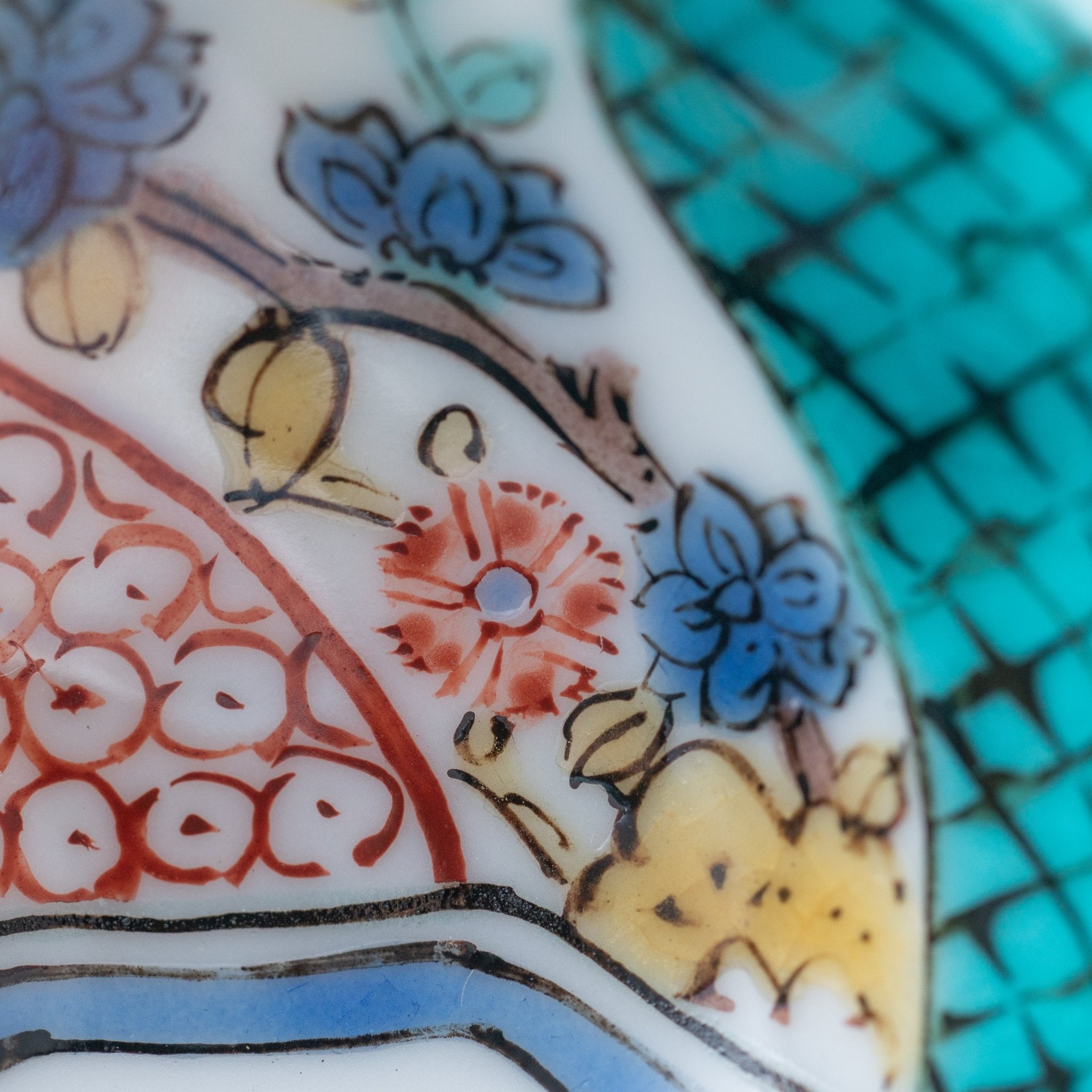
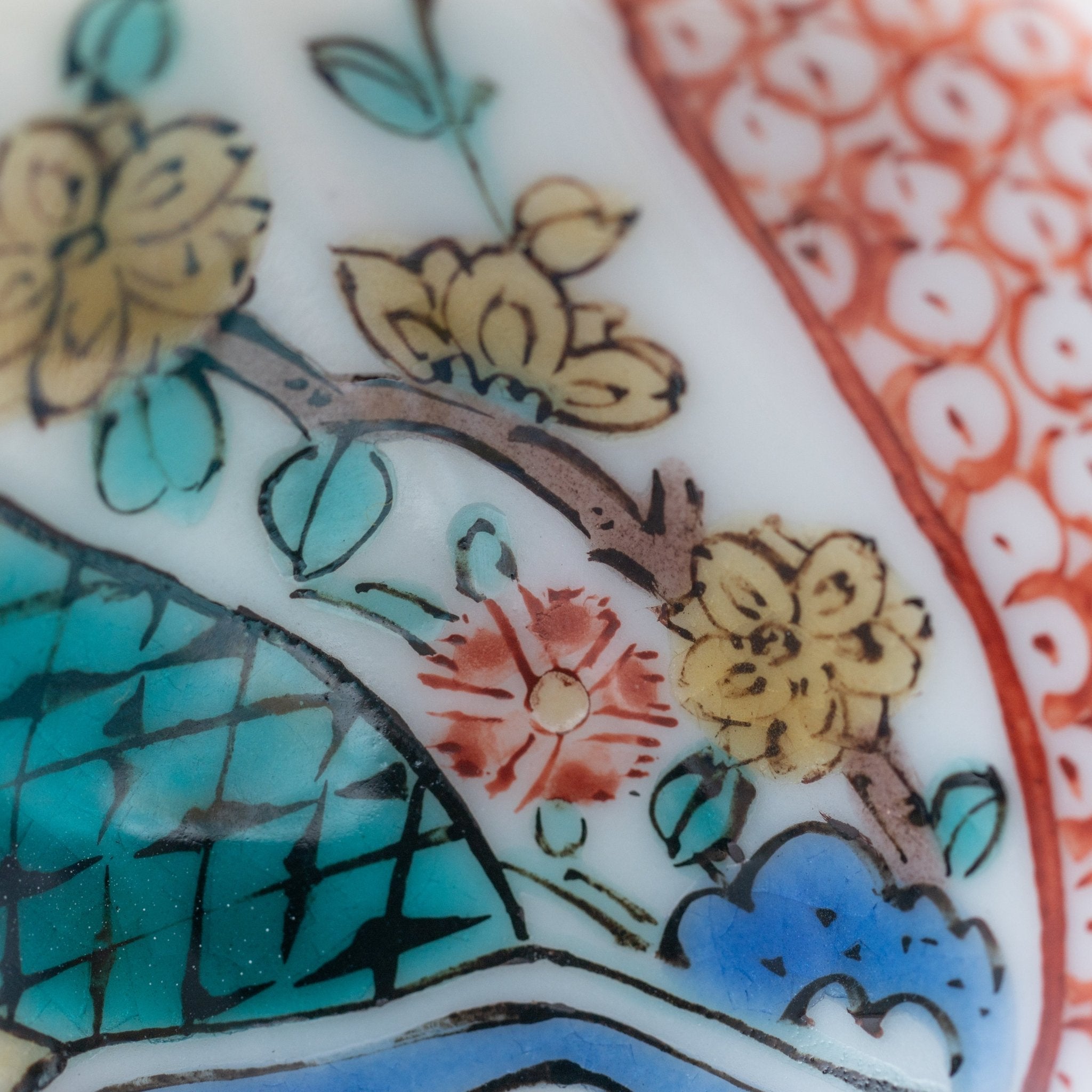
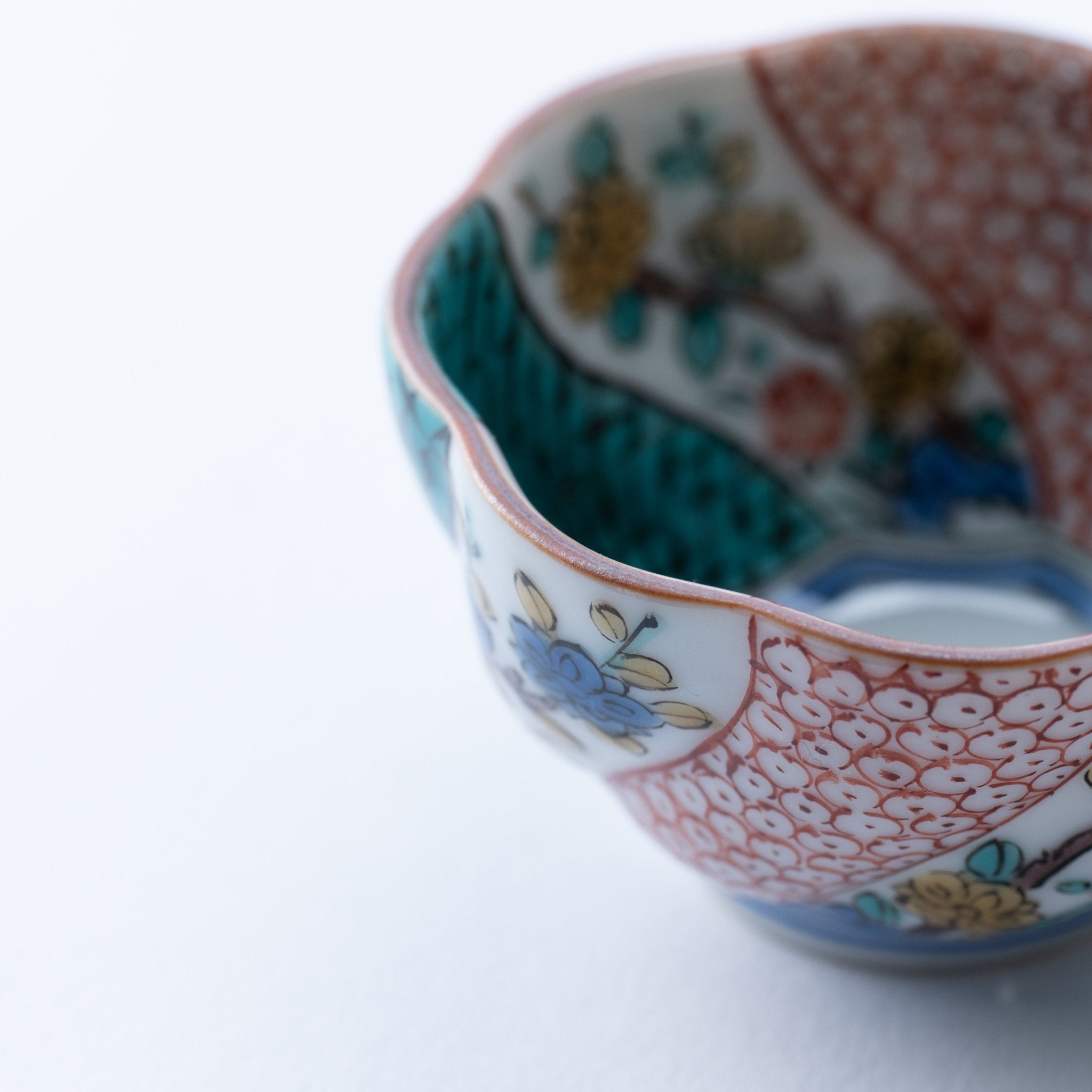
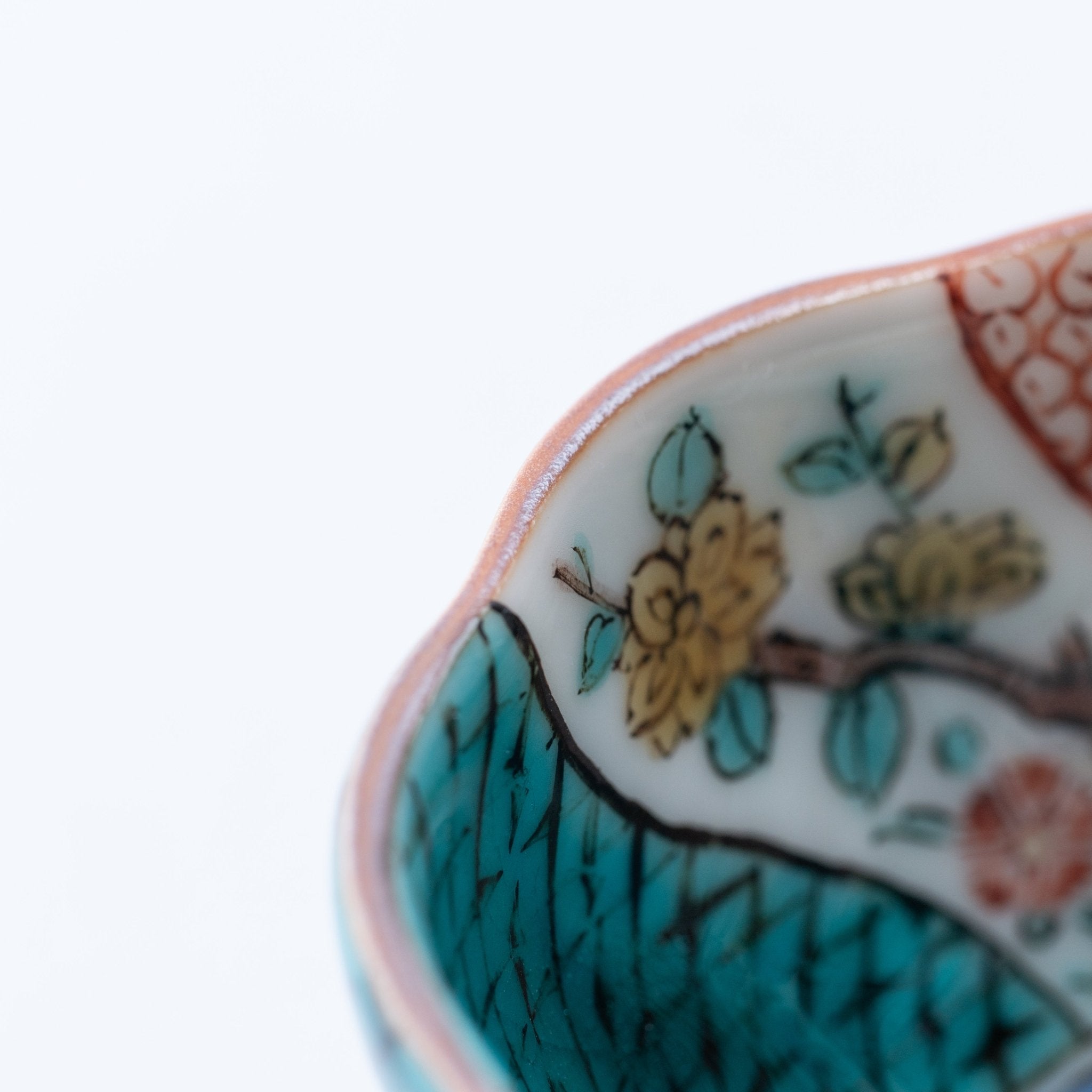
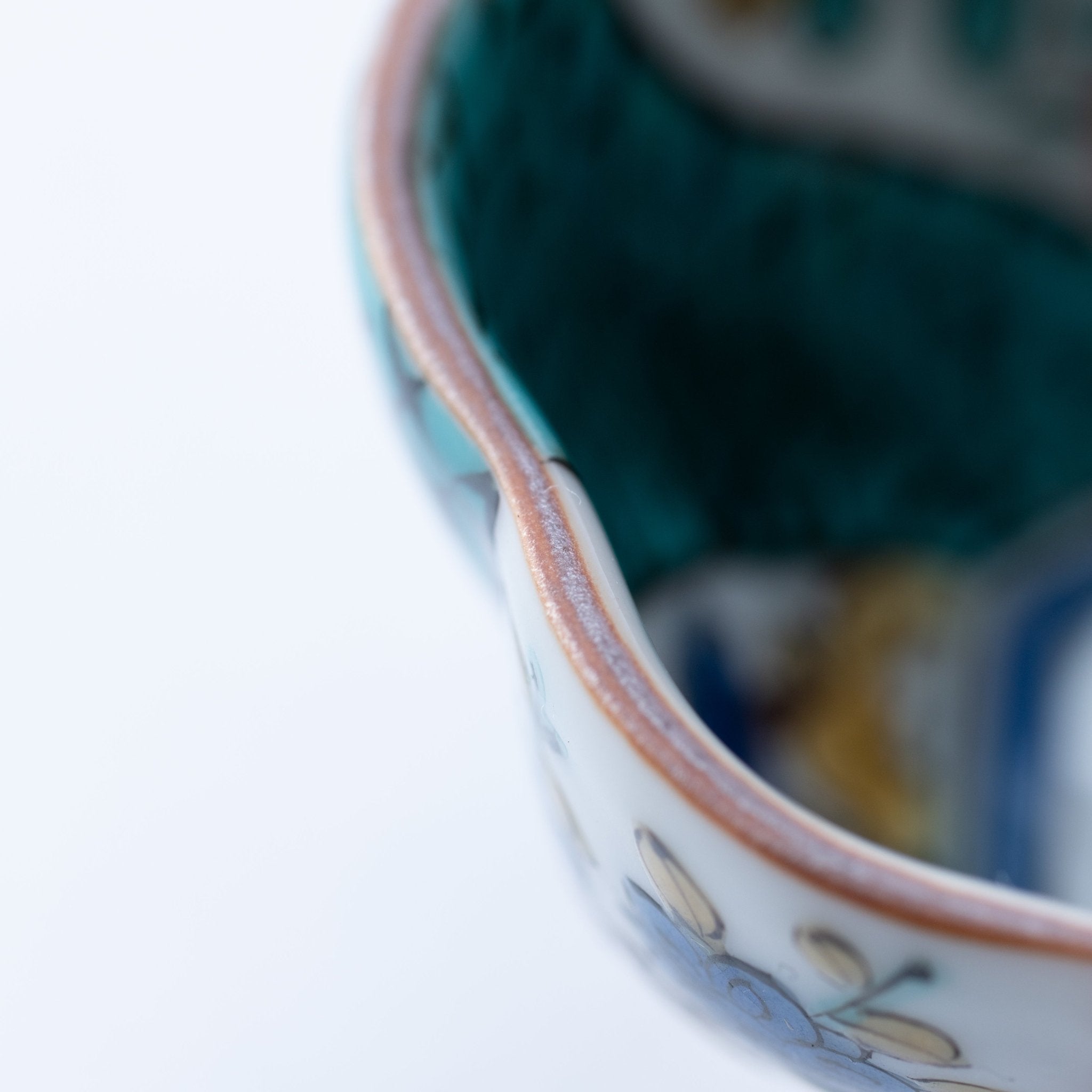
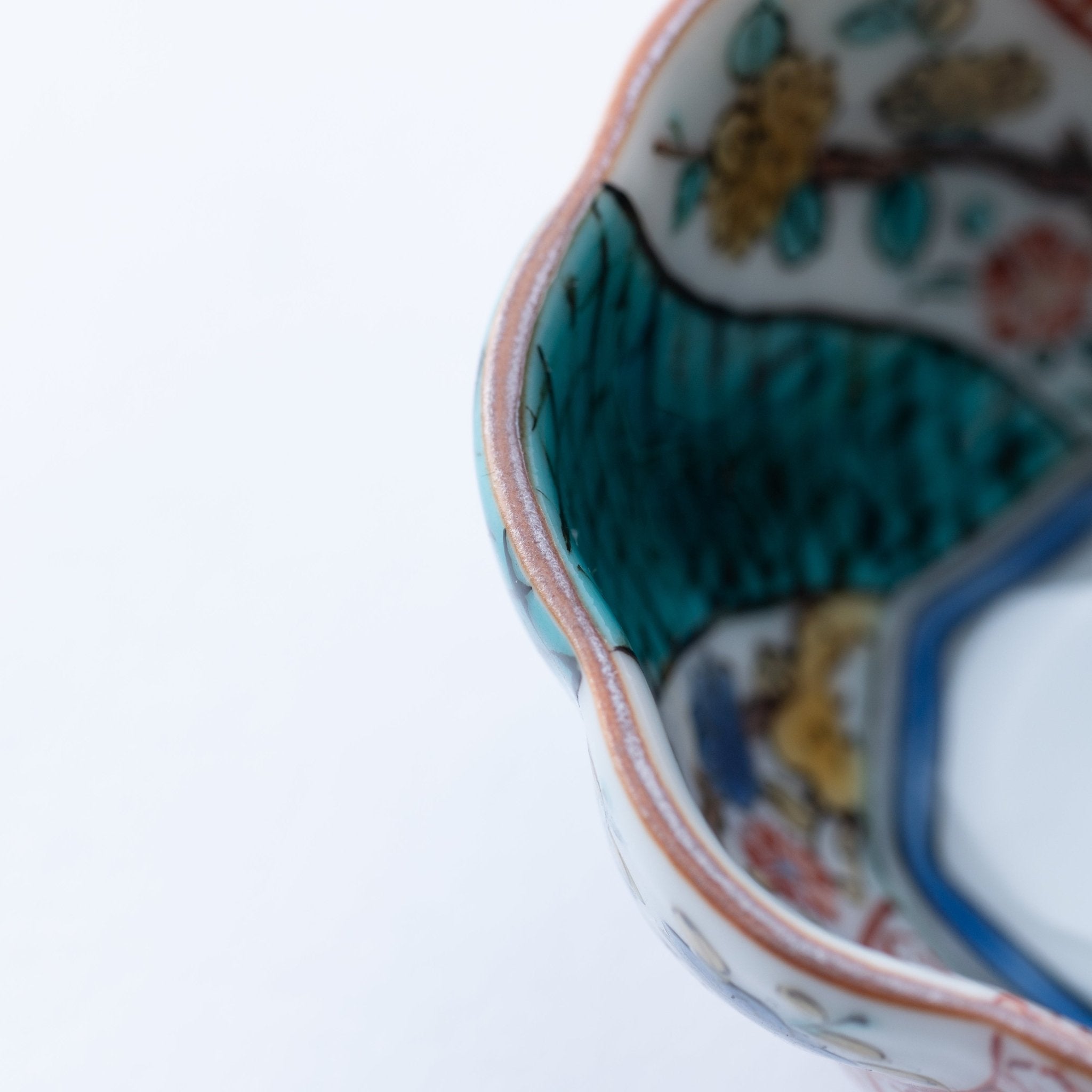
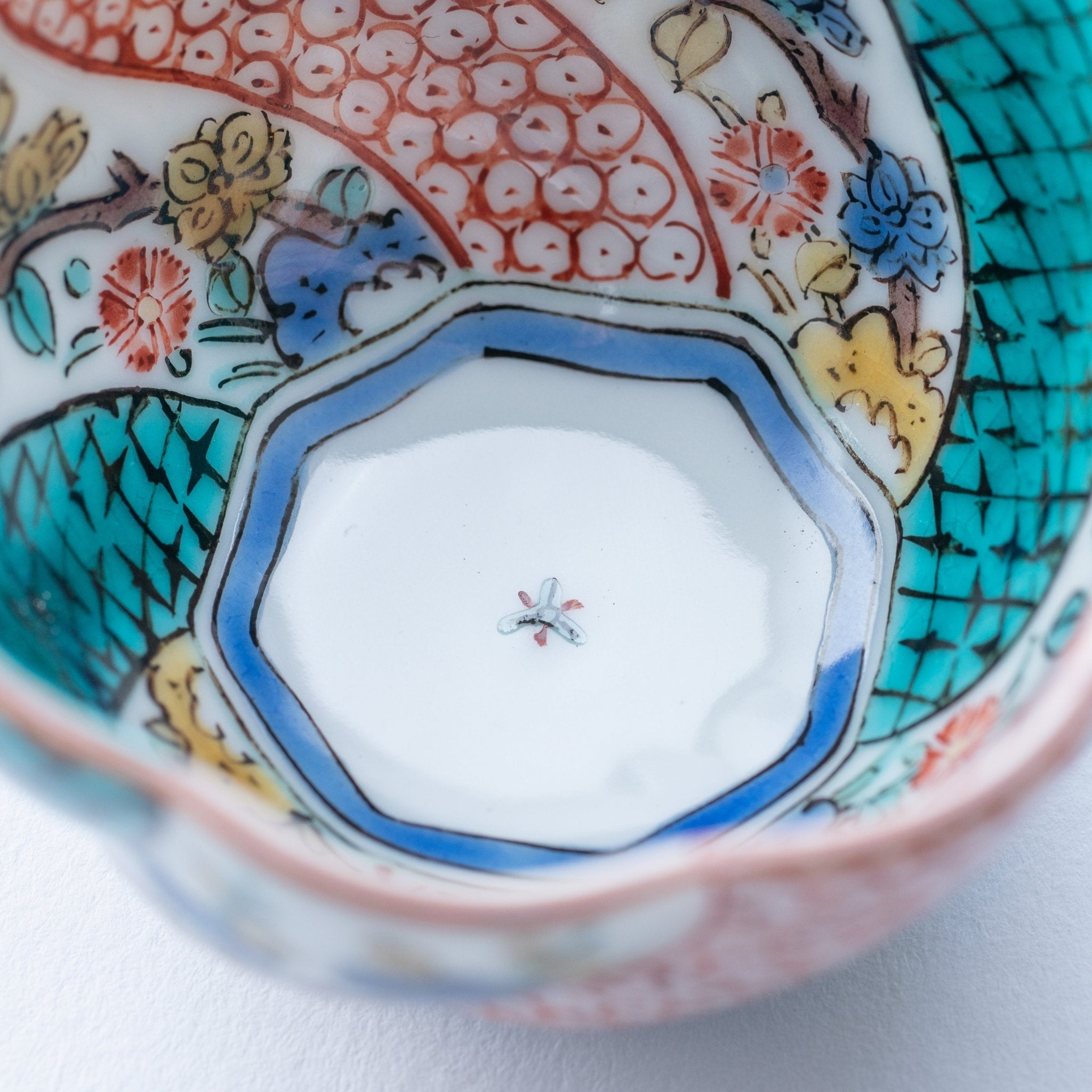

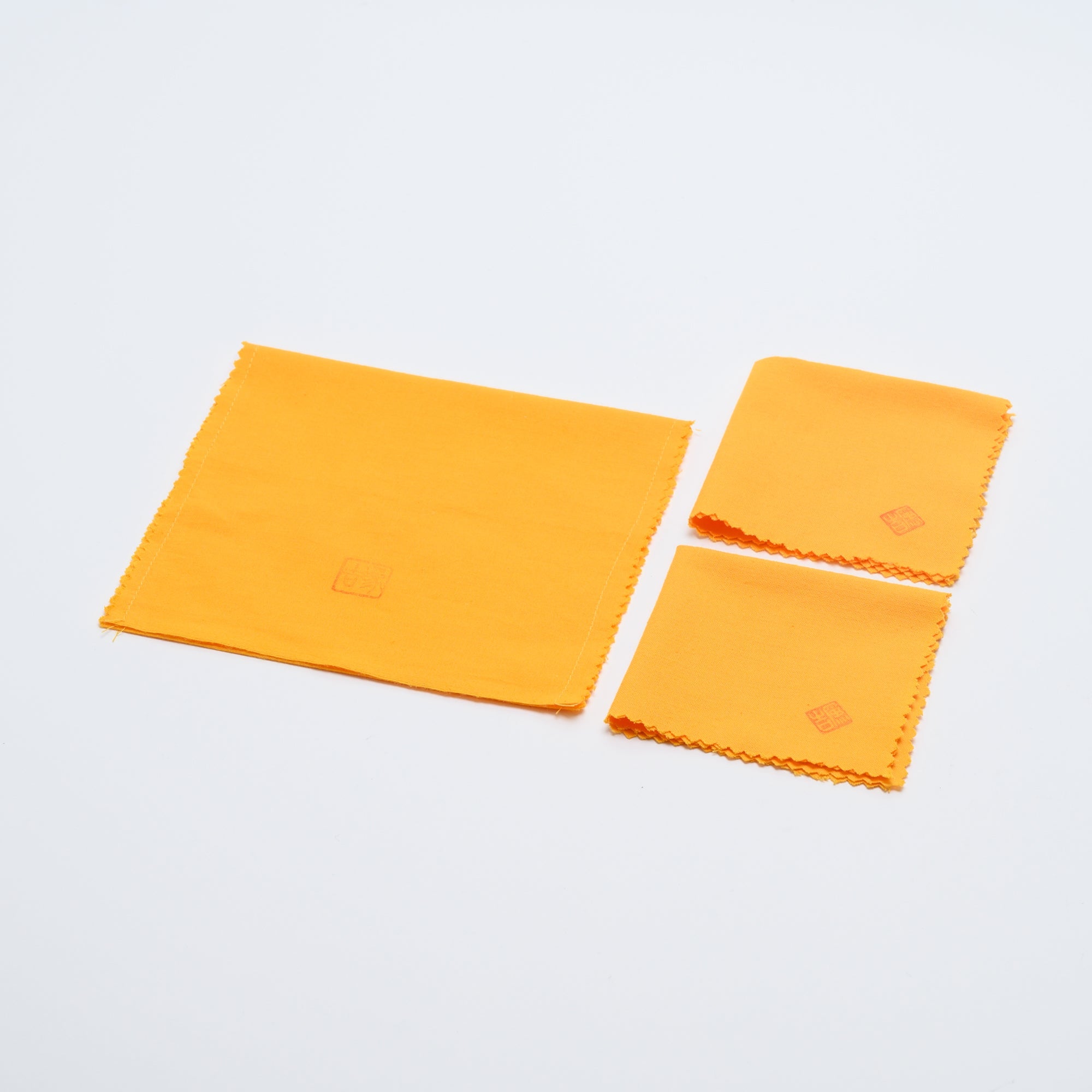

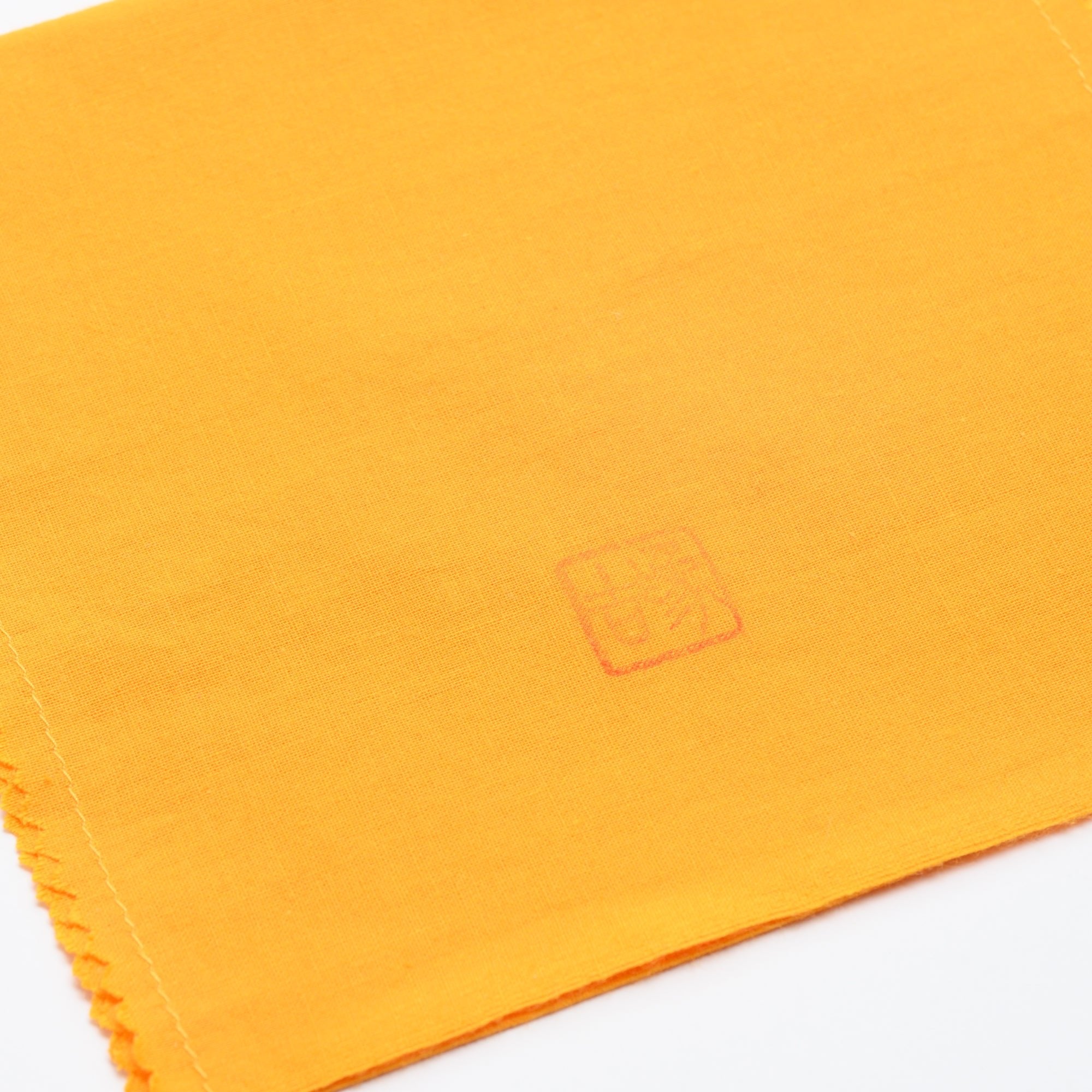
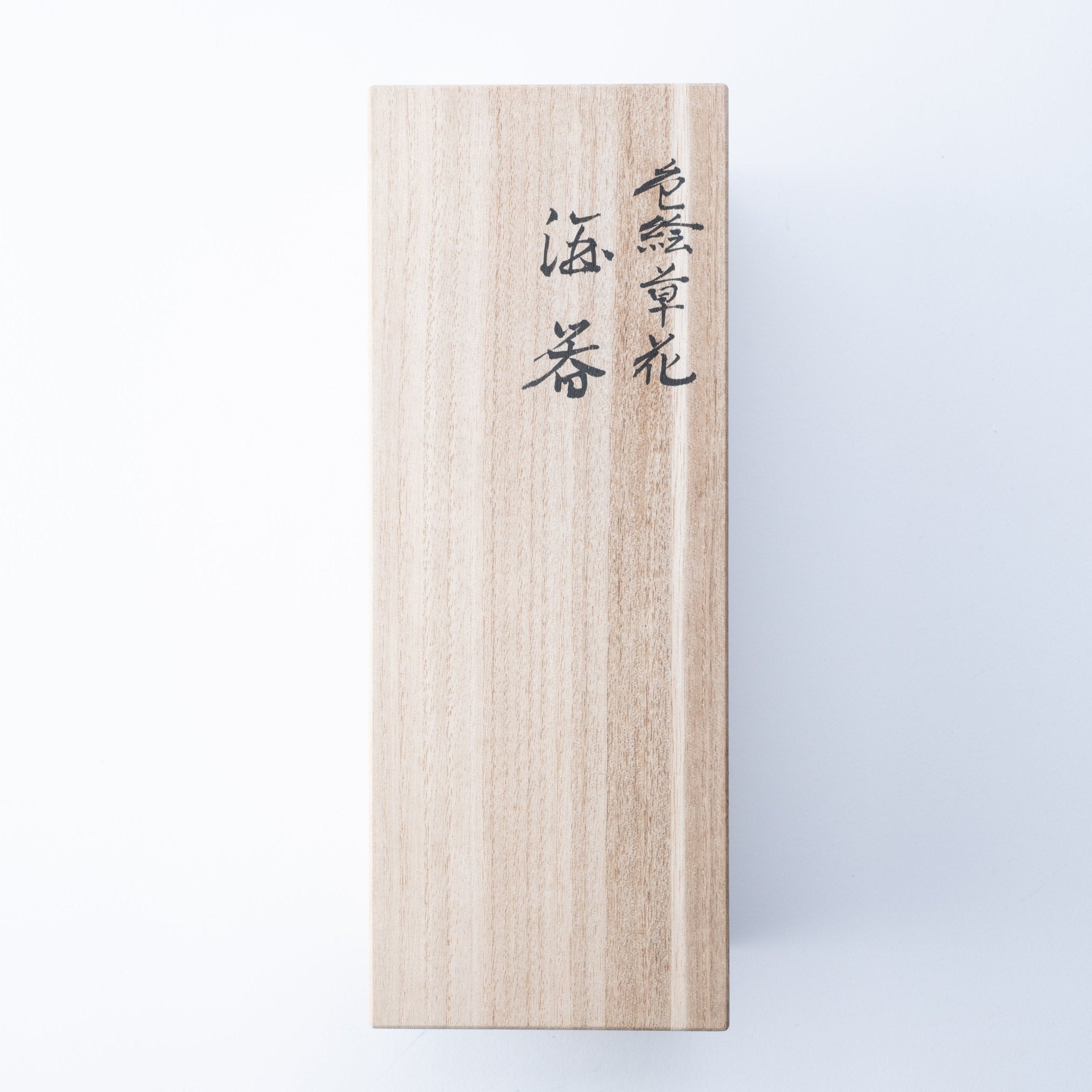
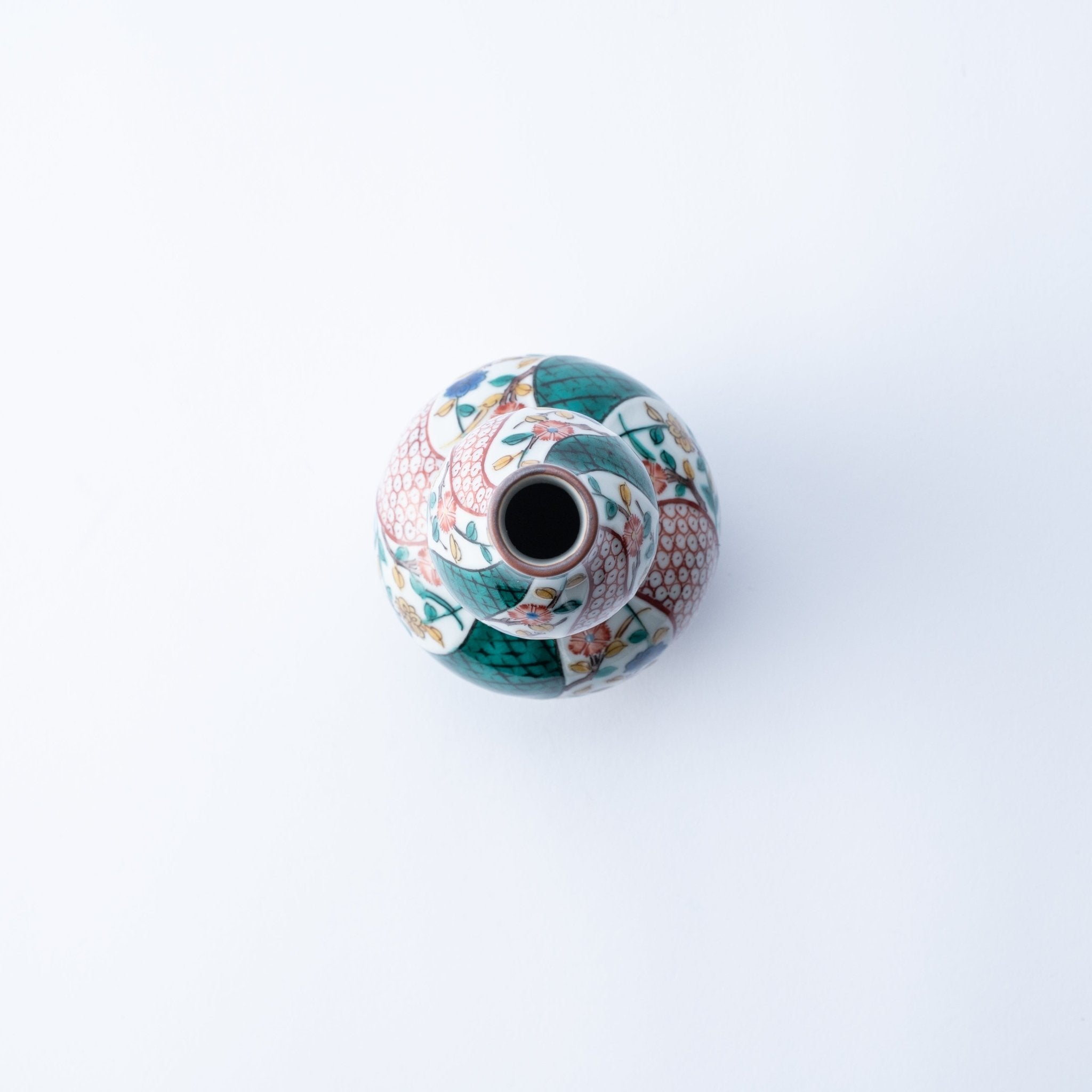
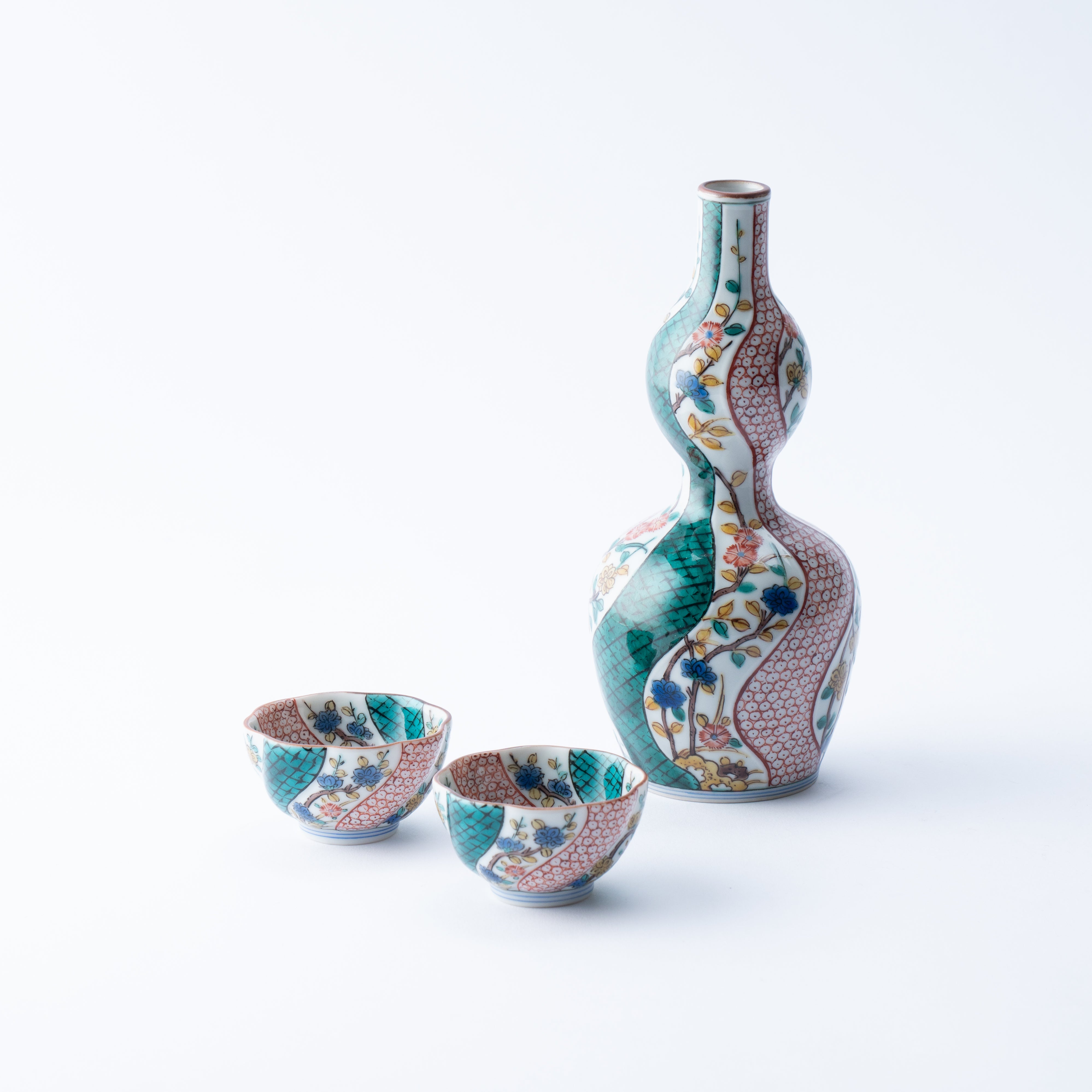
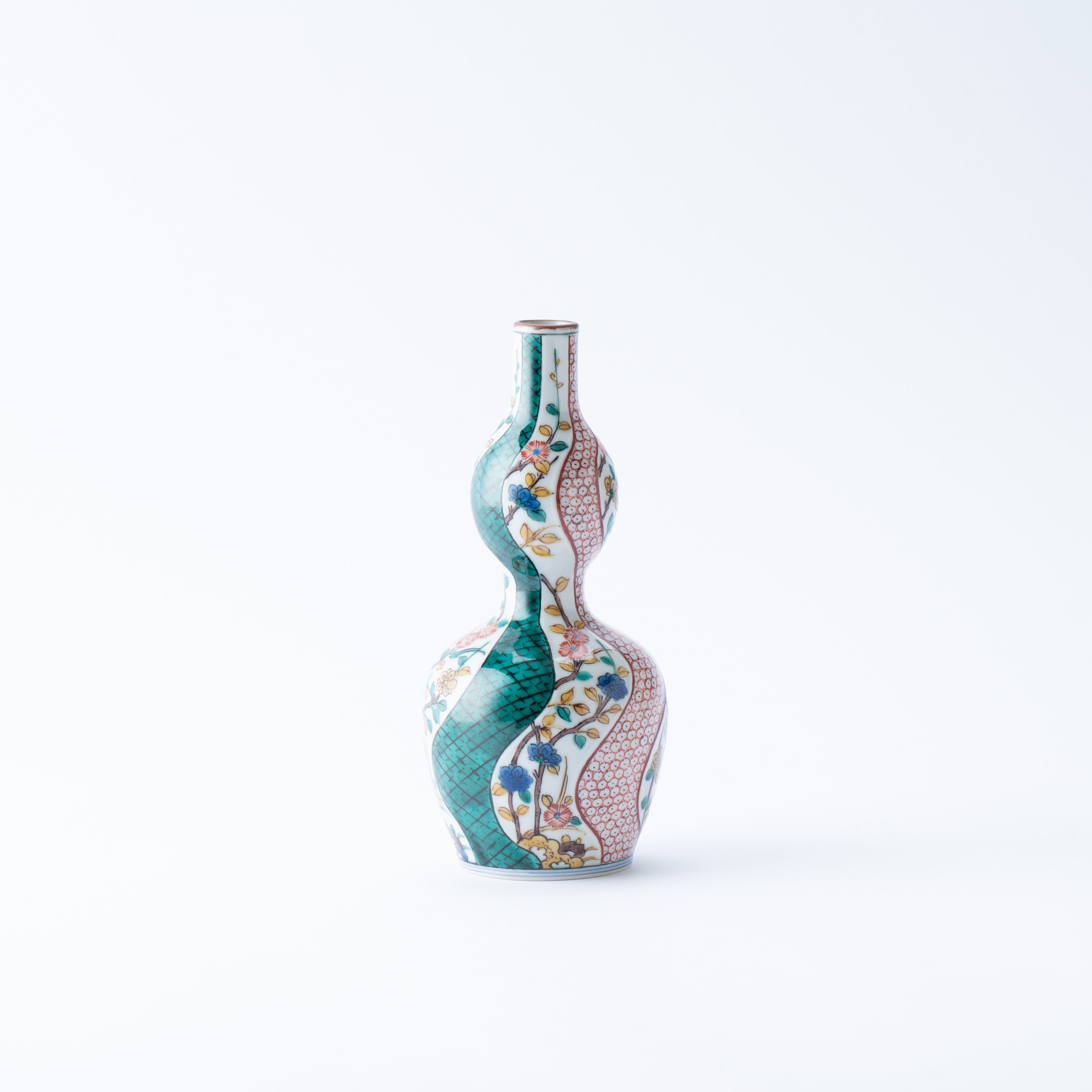
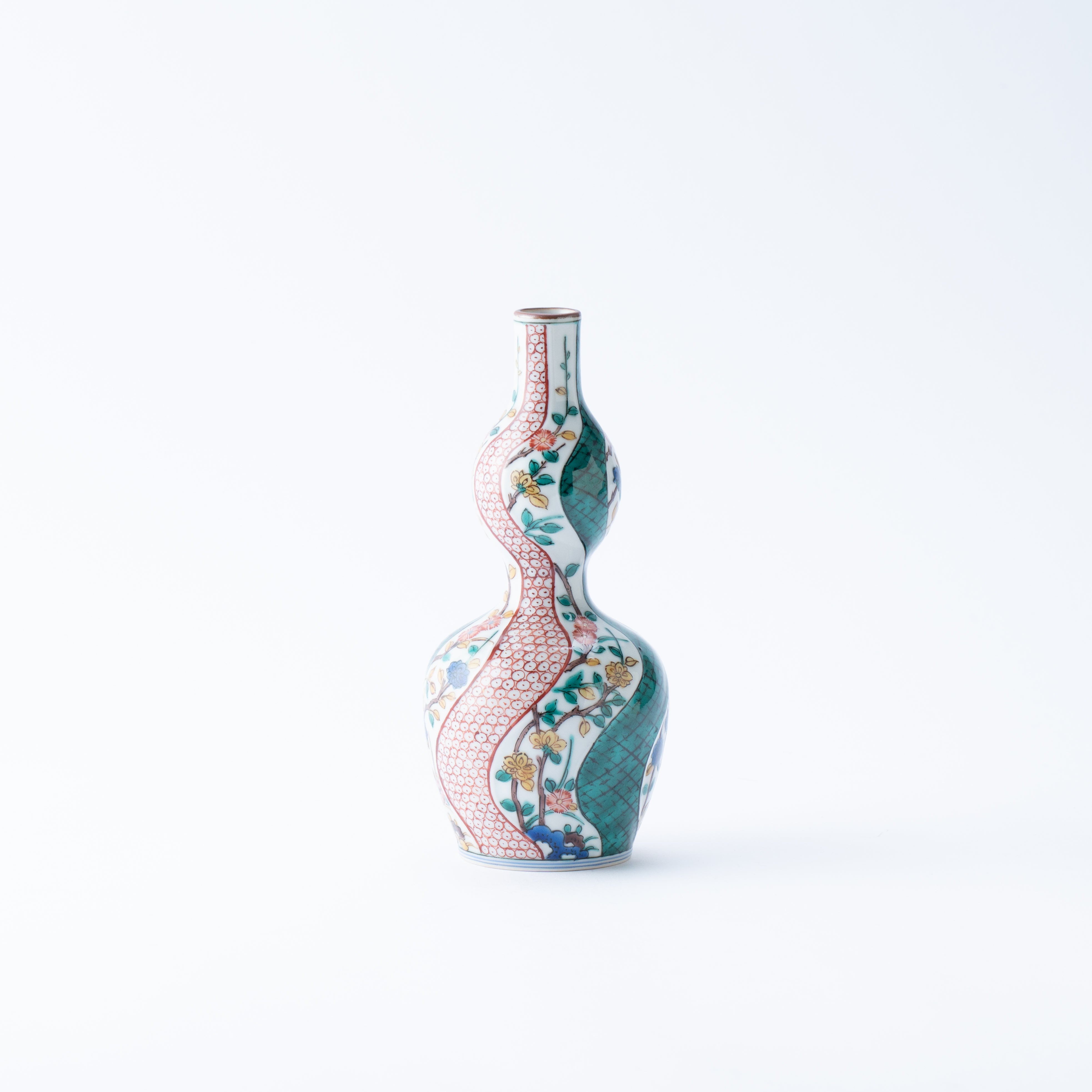

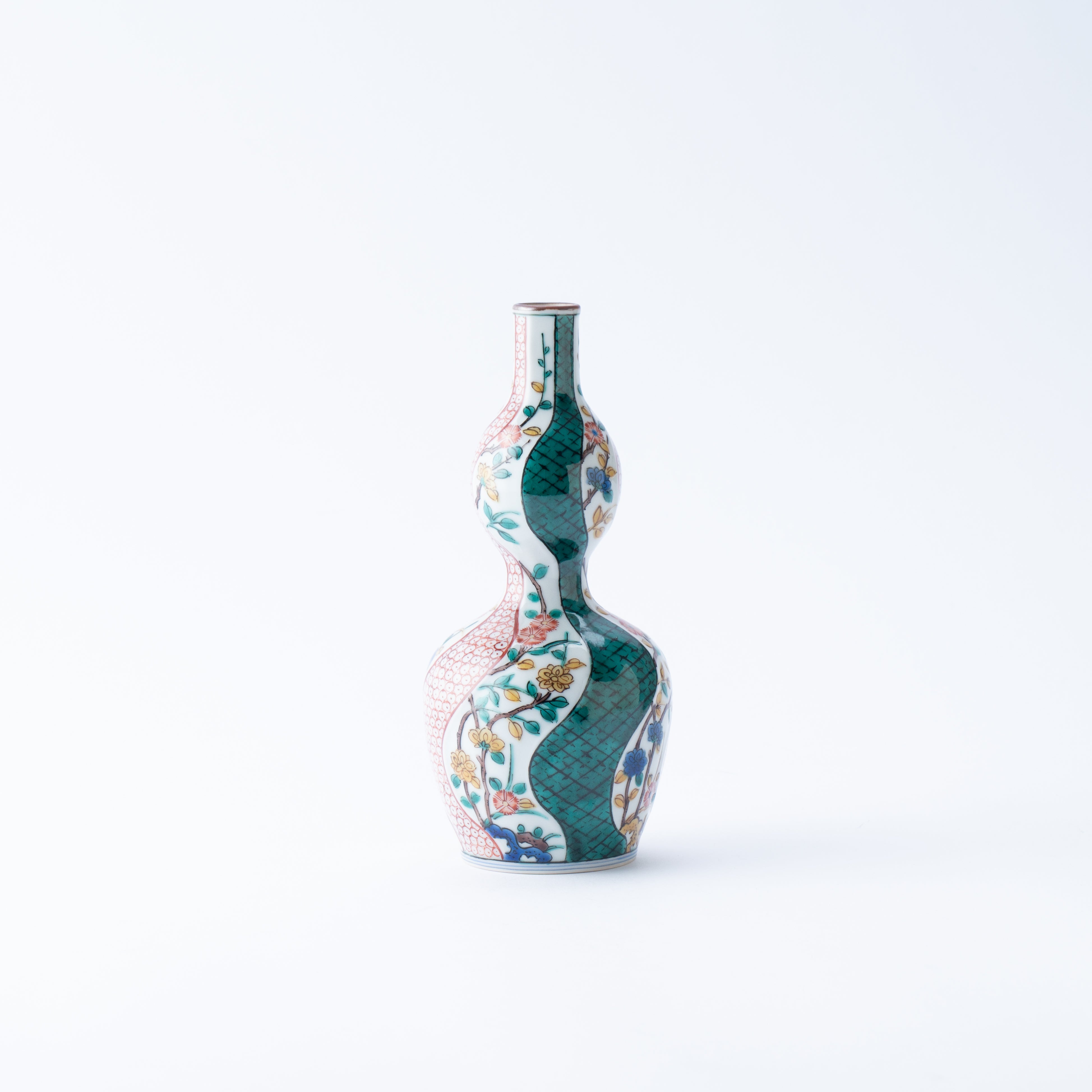
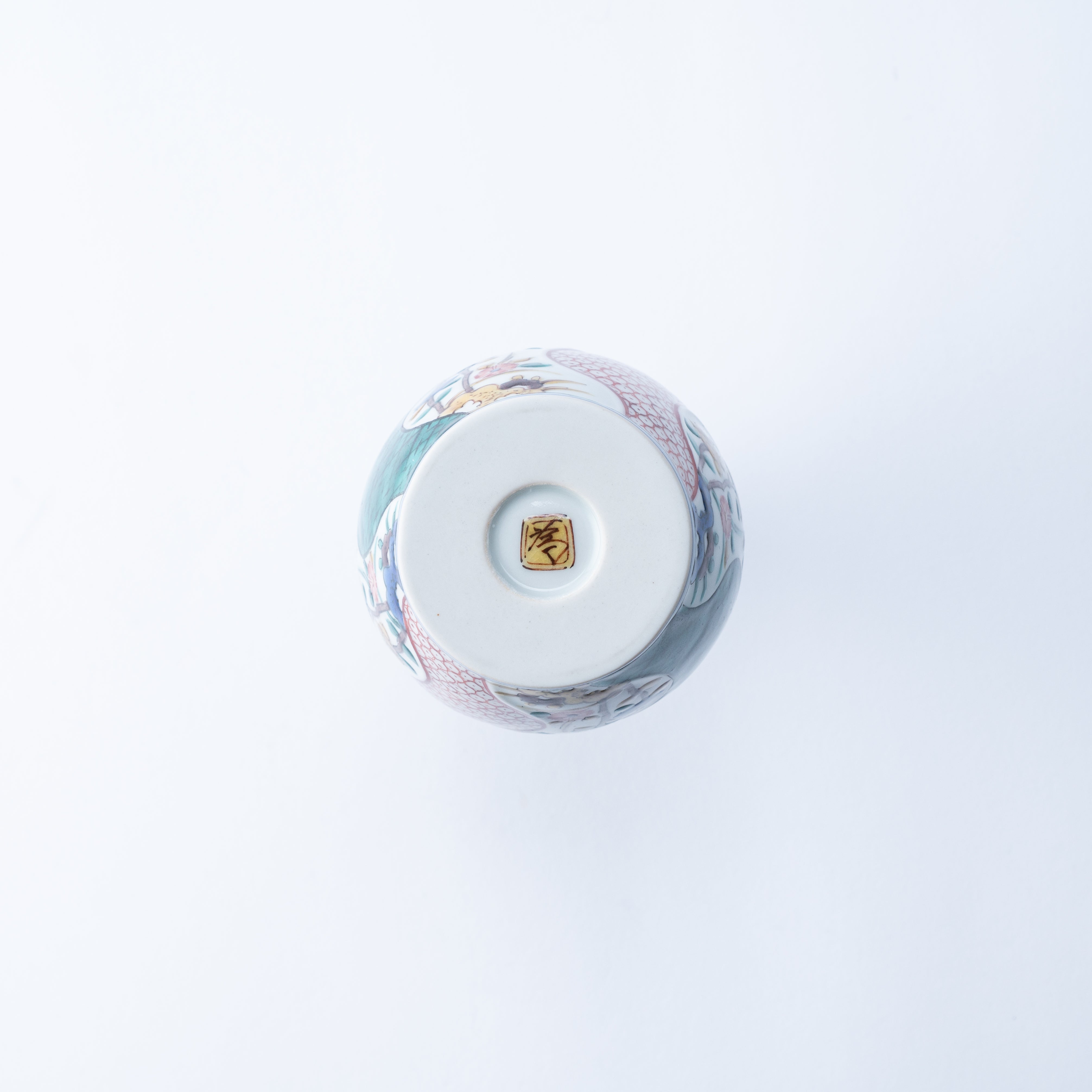
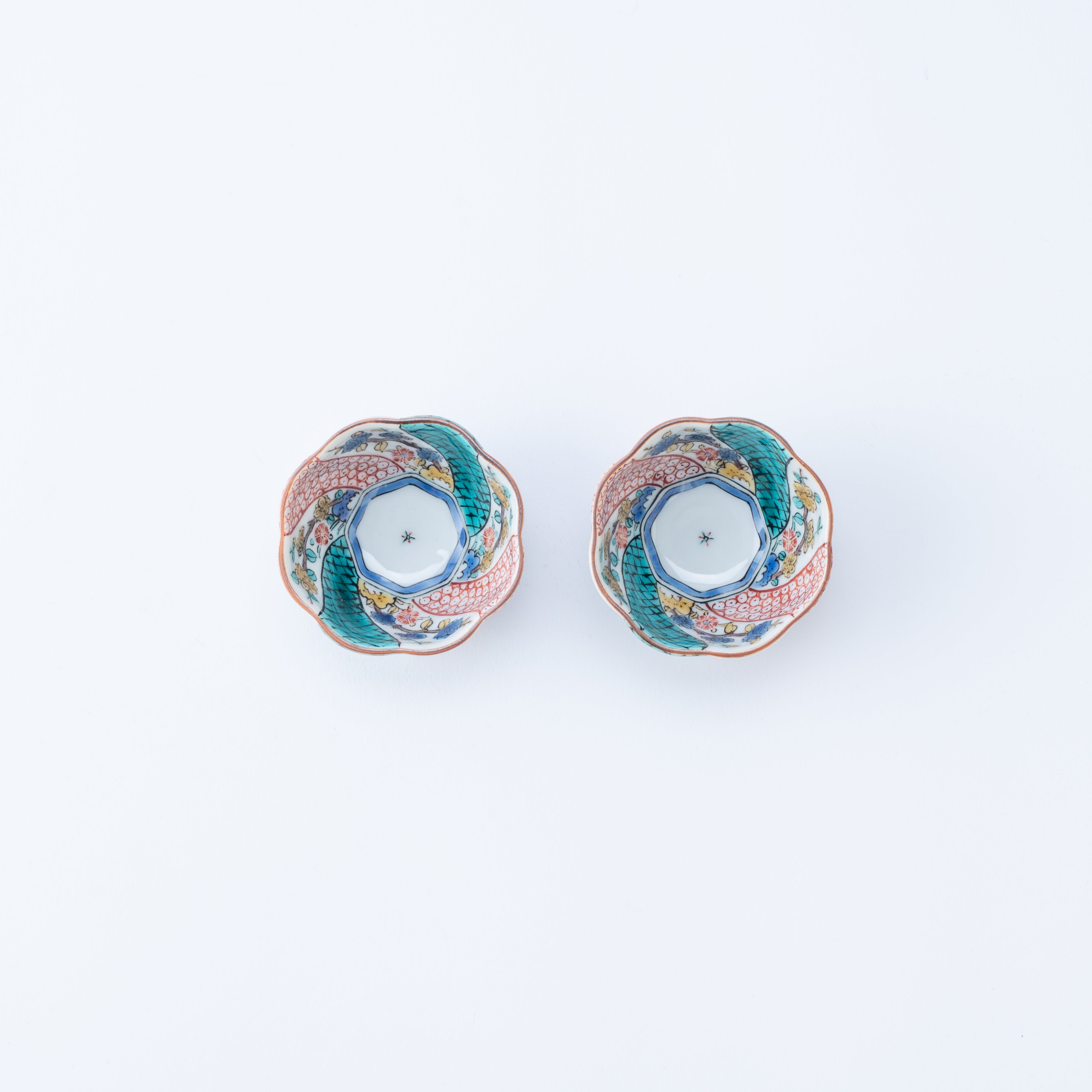
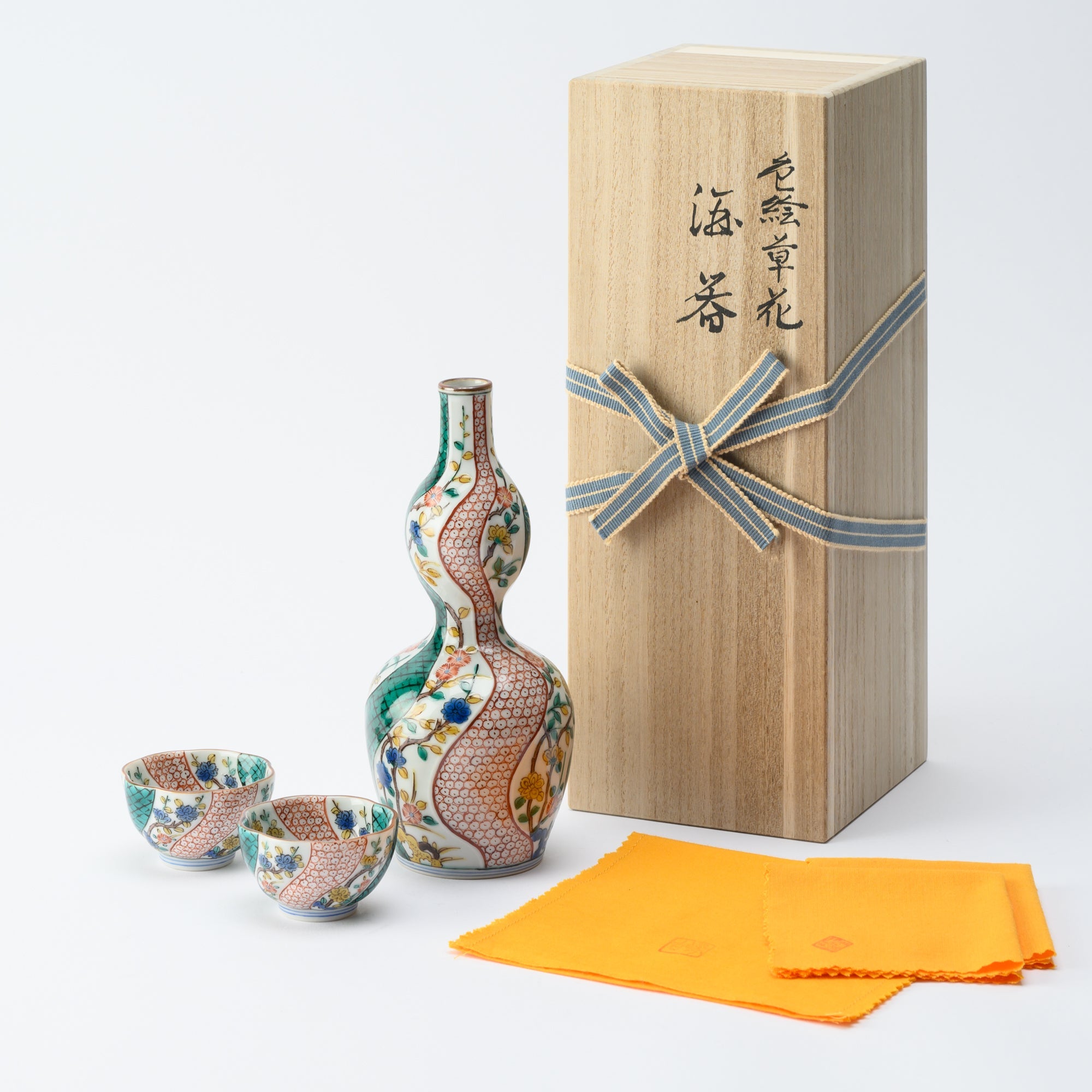
Colored Flower Patterns Sake Set
This product is currently available exclusively at Otonami Lounge Tokyo on the 10th floor of Daimaru Tokyo Station.
Embrace the elegance of Japanese artistic heritage with the Mitsui Tamekichi Colored Flower Pattern Sake Set. This exquisite piece, crafted in the revered ko-Kutani style, embodies the brilliant fusion of cultural legacy and aesthetic sophistication that characterizes Mitsui Tamekichi's work.
The gourd-shaped tokkuri sake carafe and two accompanying sake cups are each adorned with identical botanical and traditional geometric patterns, exuding a harmonious blend of meticulous detail and dynamic rhythm that elevates any sake-drinking occasion. Even displayed on your home bar, this set is sure to captivate all who behold it.
The gourd-shaped tokkuri sake carafe, believed to bring good luck, exemplifies the exquisite craftsmanship of Kutani ware, captivating the viewer's attention. The smooth curves and flowing lines of its unique yomodasuki "square patterns," rendered in vibrant green and other traditional Kutani ware motifs, transcend mere functionality. This piece becomes a magnificent depiction of nature’s serene beauty.
DETAILS
| Quantity | 1 sake carafe and 2 sake cups |
| Size |
[Tokkuri sake carafe] D 8.5 cm (3.3 in) x H 19 cm (7.5 in) [Sake cups] D 6.3 cm (2.5 in) x H 3.5 cm (1.3 in) |
| Capacity |
[Tokkuri sake carafe] 350 ml (11.8 oz) [Sake cups] 40 ml (1.4 oz) |
| Material | Porcelain |
| Package Type | Wooden box |
| Microwave | No |
| Dishwasher | No |
Maker / Brand
The art of Mitsui Tamekichi captures the depth and sensibilities of discipline and aesthetic refinement. His use of vibrant Kutani gosai "five colors" and elegant, dignified expressions bring to life the sophisticated artistry of natural motifs. By embracing ko-Kutani, or old Kutani, styles and perfecting techniques passed down through the centuries, his creations garner admiration for the enduring classical beauty of Kutani ware's polychrome artistry.
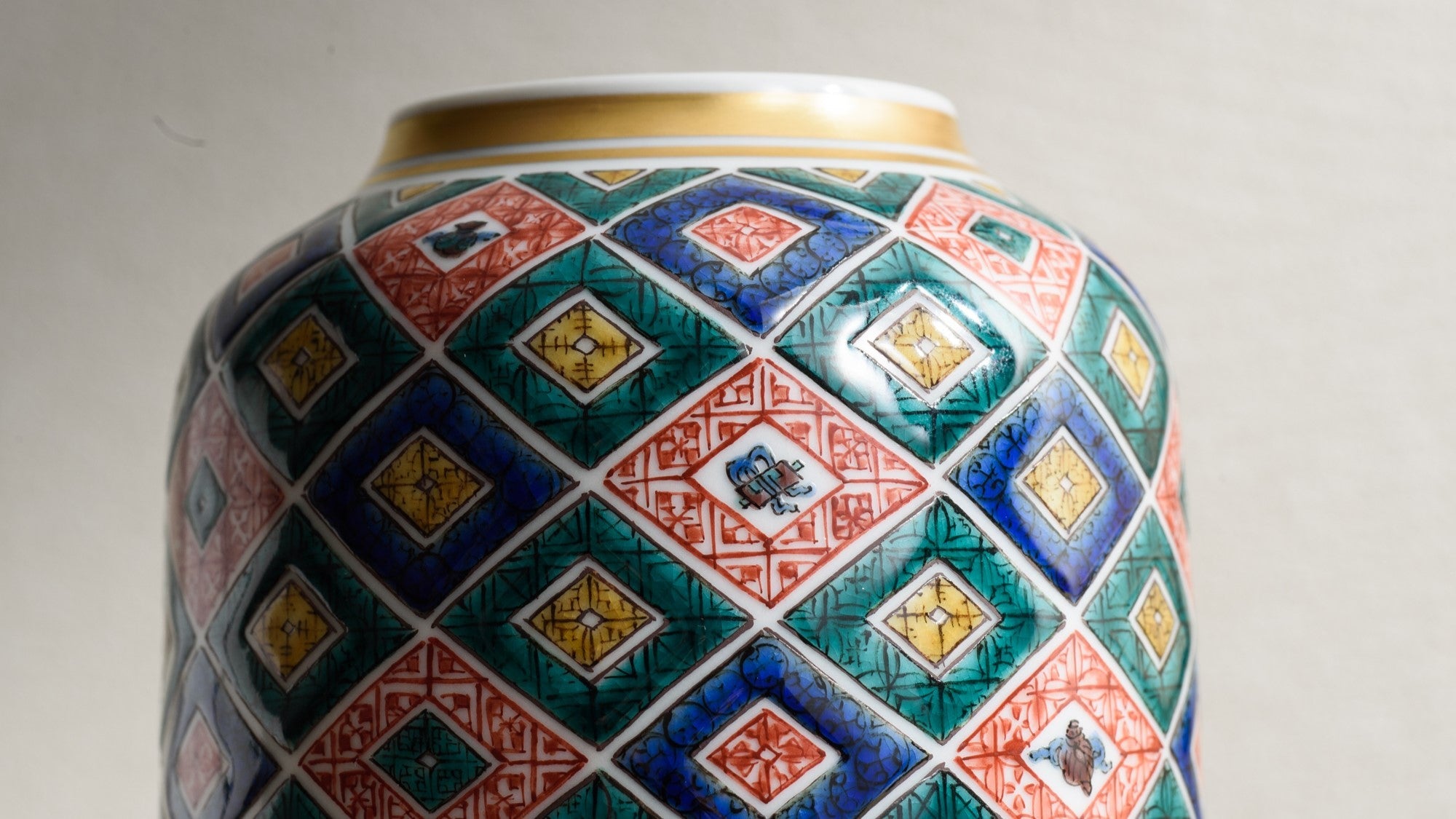
Crafts
Kutani ware is a pottery produced in the Kaga region of Ishikawa Prefecture, with a history spanning over 350 years. It is characterized by the heavy brilliance of the five colors of navy blue, red, purple, green, and yellow that are applied to the bold and daring lines. Its long history has evolved through the tireless efforts and enthusiasm of people who have sought innovation while maintaining tradition.
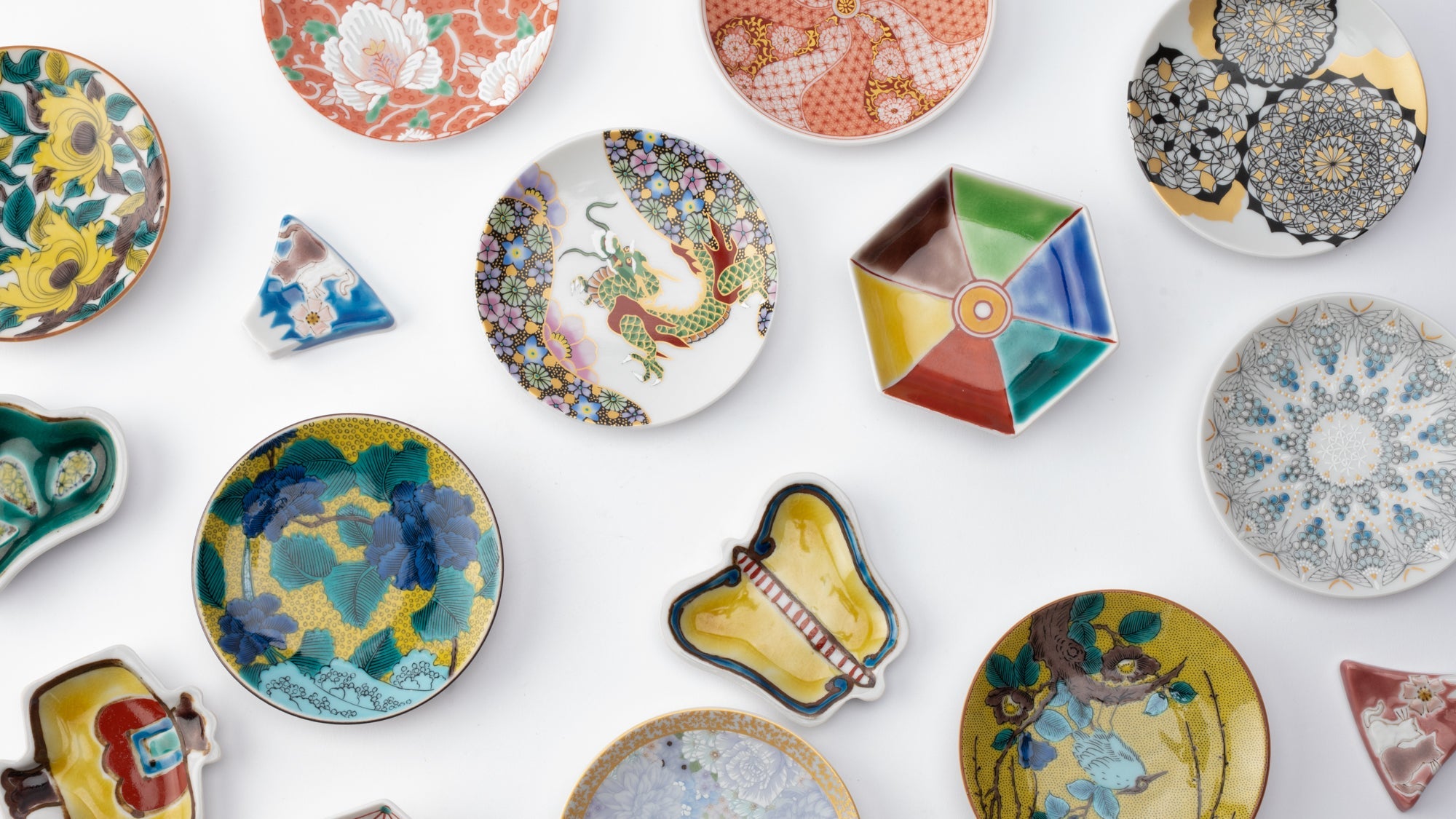
Choose options
About Artist
Musubi Gallery
Since its inception, MUSUBI KILN has strived to introduce the world to the finest traditional crafts from masters all around Japan.
Here, in the Gallery, we seek to showcase the highest echelon of traditional techniques passed down through generations. You can discover works from masters who have not only perfected those methods, but added their imagination to innovate the craft even further.
Some of these masters have even been named Living National Treasures, a title bestowed upon them by the Japanese government to formally recognize their contribution to crafts and culture — thereby cementing their legacy and making them an important part of art history.
Each piece is meticulously handcrafted over many months to create a timeless treasure that's unlike any other. And when it's in your home, you, too, will become part of that history.
Welcome to the Gallery. Please, peruse at your leisure.
